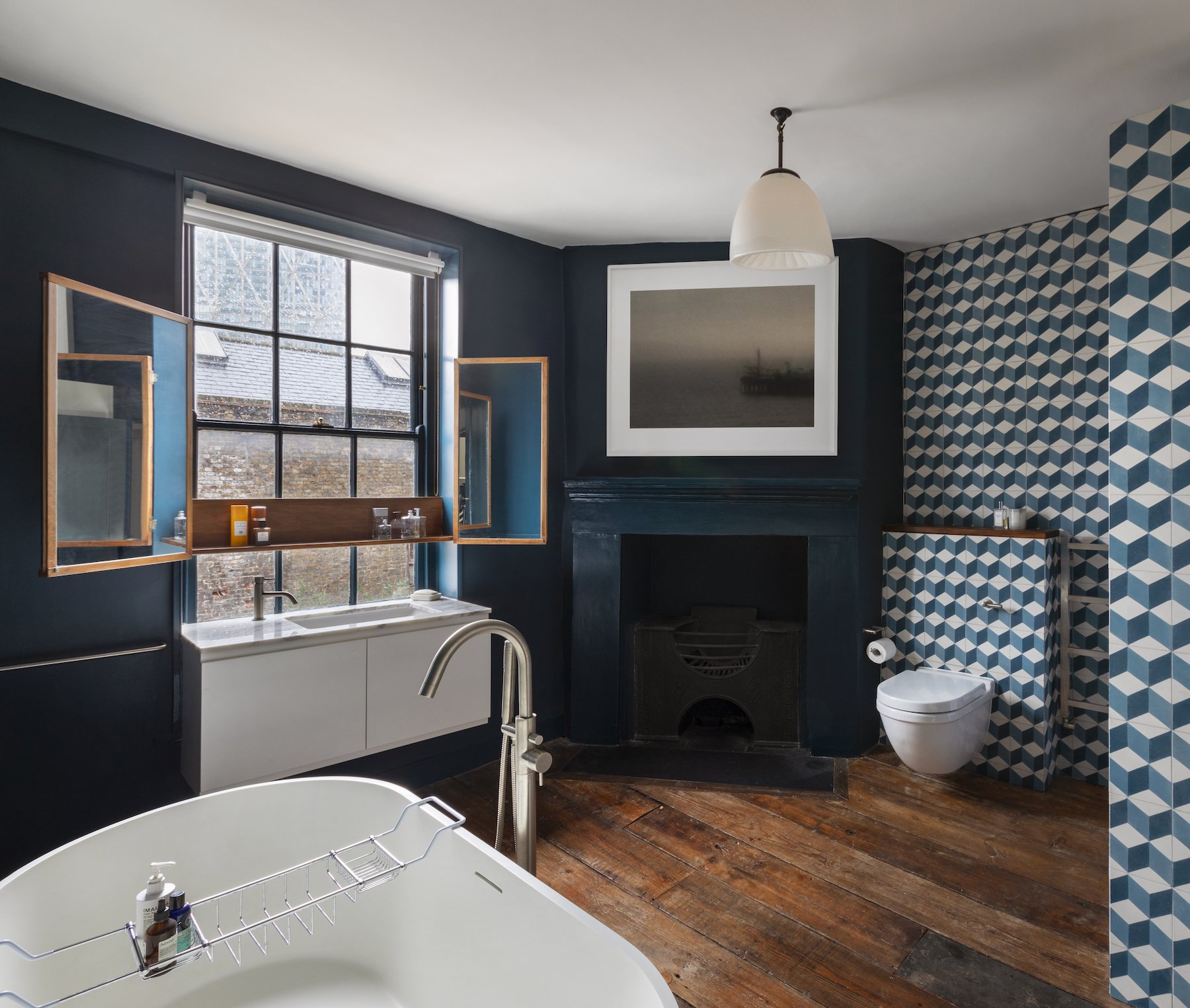
Our Reclaimed Wood
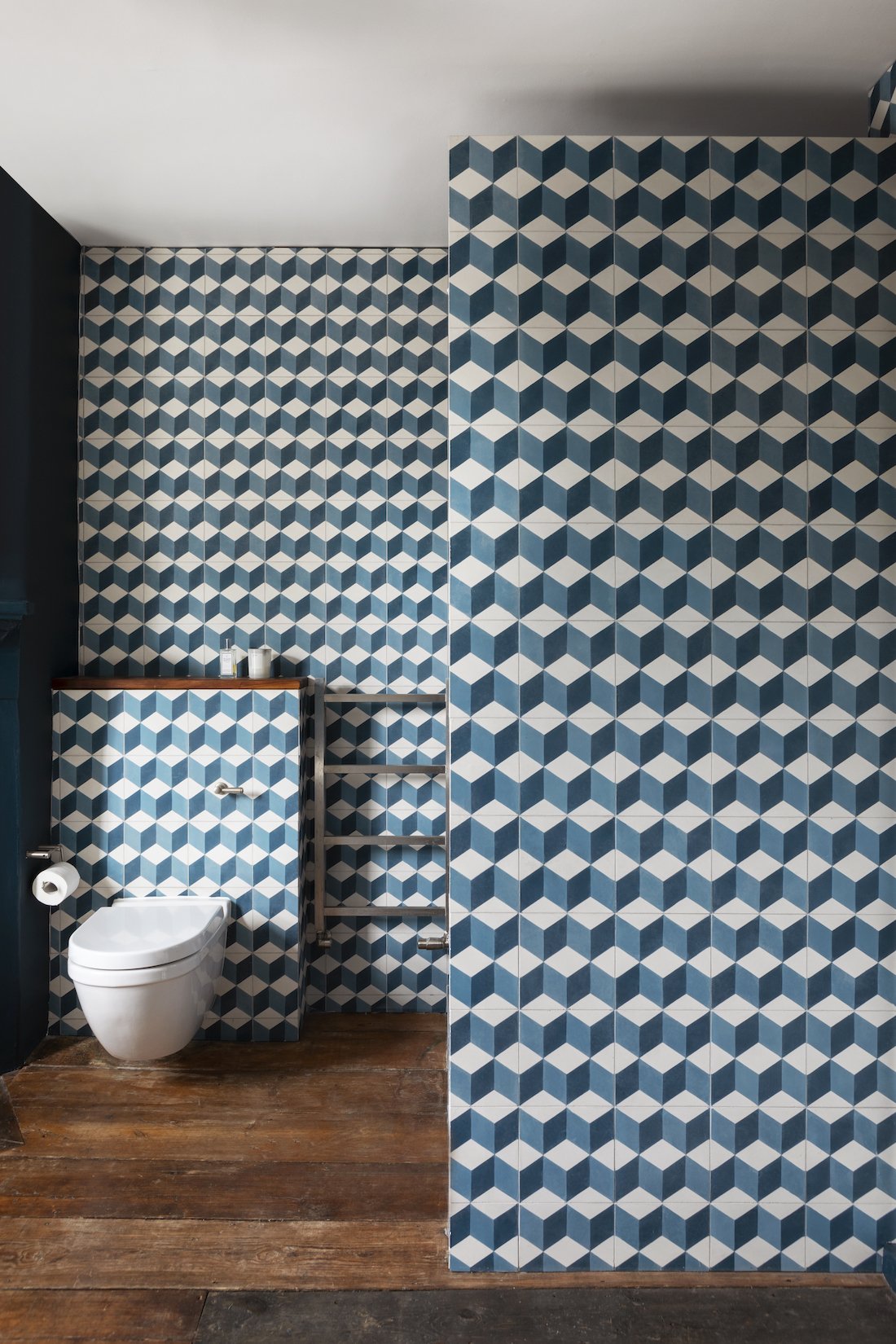
Our Reclaimed Wood
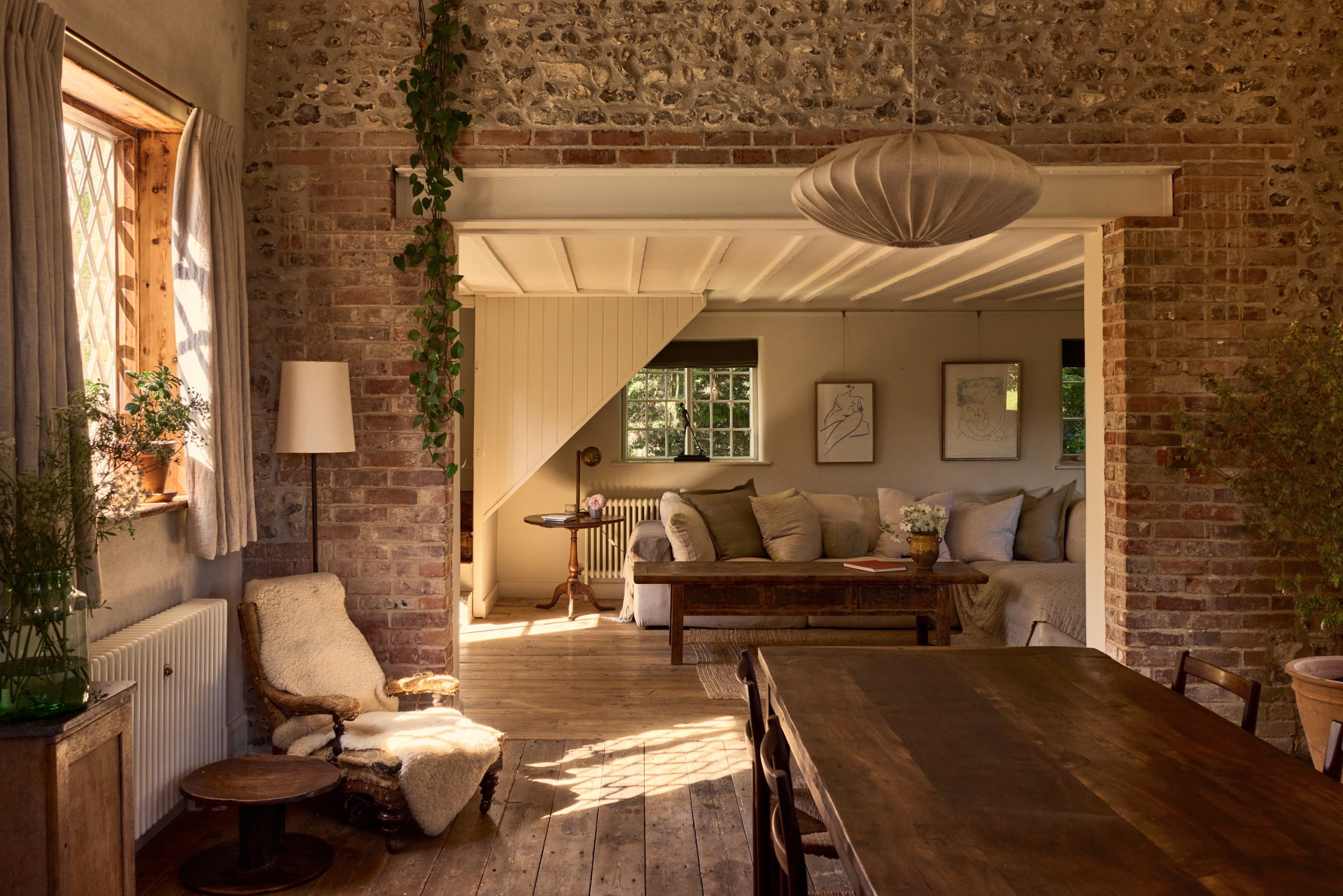
Reclaimed wood has emerged as more than a design trend in an age defined by environmental urgency.
It’s a tangible link between heritage and a sustainable future.
This timeless material, salvaged from old barns, factories, and even shipwrecks, is gaining fresh relevance in what some visionaries dub the coming Symbiocene era.
The Symbiocene is imagined as a new chapter of human history marked by harmony between people and nature, a deliberate departure from the exploitative patterns of the Anthropocene (our current epoch of human-driven ecological strain).
In this context, using reclaimed wood isn’t just an eco-friendly choice.
It symbolises the melding of past wisdom with future-forward thinking.
The result is a design ethos that champions ecology, aesthetics, and practicality in equal measure.
To appreciate the significance of reclaimed wood in future design, it’s essential to understand the Symbiocene concept.
Coined by environmental philosopher Glenn Albrecht, the Symbiocene describes a “future state where humans are re-integrated with the rest of nature,” bringing human life into balance with all other life forms.[1]
This starkly contrasts with the Anthropocene, the current era of human dominance and environmental disruption, from climate change to mass extinctions.
The Anthropocene’s legacy has been one of despair and desolation, whereas “the Symbiocene represents its opposite,” a hopeful era of restoration.[2]
In Albrecht’s vision, nearly every aspect of our culture, economy, and technology would be “seamlessly re-integrated back into earthly symbiotic life”.
Envision the Symbiocene as the opposite of today’s unsustainable world.
It replaces toxic industries with biodegradable materials and renewable energy.
Rather than dominating nature, we become part of a “shared life” community with other species.
This isn’t regression but advancement, potentially one of humanity’s most rapid periods of positive innovation.
Architects, designers and engineers will be vital in crafting this harmonious future.
Reclaimed wood powerfully aligns with these Symbiocene principles. It is material taken from the remnants of past human structures and given a new life in the present.
By reusing wood rather than harvesting new timber, we honour the Symbiocene ethos of collaboration with nature (as opposed to domination) and participate in what scientists call a circular economy, where waste is minimised, and materials circulate through multiple lifecycles.
In the Symbiocene worldview, human progress doesn’t mean producing more from new resources. It means delivering better outcomes by regenerating and reusing what we already have.
And reclaimed wood embodies this philosophy.
Choosing reclaimed wood is fundamentally an ecological choice.
Every salvaged timber saves a tree, directly preserving forests, and is a vital carbon sink in fighting climate change.
Reclaimed wood helps maintain intact forests by reducing the demand for fresh lumber while avoiding the energy consumption and emissions associated with logging and milling new wood.
A lifecycle analysis by the U.S. Forest Service found that producing new lumber can require 10 to 13 times more energy than producing reclaimed lumber, with a global warming impact roughly 3 to 5 times greater. [3]
In other words, reclaiming wood dramatically shrinks the carbon footprint of construction materials.
Not only does reclaimed wood save trees, but it also tackles the issue of waste. When buildings are demolished, usable wood often ends up as debris. In the UK, for example, millions of tonnes of timber waste are generated by construction and demolition each year. [4]
Much timber waste is incinerated or landfilled, releasing methane, a potent greenhouse gas. Reclaiming this wood prevents these emissions and reduces strain on waste facilities.
A Nature Communications study found that a circular approach to timber in the UK could deliver a 78% reduction in carbon emissions by 2050 compared to single-use models. Combined with new tree planting, this approach could avoid 258.8 million tonnes of CO₂ by mid-century, significantly contributing to net-zero targets. [5]
Wood stores carbon in its fibres. When burnt or left to rot, this carbon escapes into the atmosphere. We keep this carbon locked away for decades by reclaiming timber for buildings or furniture.
Thus, reclaimed wood is a carbon repository that replaces high-carbon materials like steel or concrete, a dual climate benefit.
No wonder it’s called “one of the greenest building materials” available.
Using reclaimed wood supports local recycling economies. Salvaged timber typically comes from nearby sources, reducing transport emissions and strengthening community businesses such as salvage yards and woodworking studios.
This approach embodies the Symbiocene principle of prioritising local resources for local needs, allowing communities to build with what they already have rather than relying on environmentally costly global supply chains.
To see how these ideas translate into practice, we can look at some real-world examples of reclaimed wood projects and businesses leading the way:
Community Wood Recycling (UK): In cities across the UK, community enterprises collect timber waste and make it available for reuse. For instance, the Brighton & Hove Wood Recycling Project and similar groups in Bristol, Glasgow, and London salvage wood from construction skips and demolition sites. They then sell this lumber to the public at affordable prices or turn it into products. These projects reduce landfill waste and create jobs and volunteer opportunities, illustrating the social benefits of a circular wood economy.
Retrouvius (London, UK): This design firm and salvage warehouse has become iconic for stylish interiors made from reclaimed materials. Co-founder Maria Speake has designed kitchens and entire homes, restaurants, and shops using reclaimed wood for flooring, panelling, and bespoke furniture. A notable project involved sourcing timber from the Victoria & Albert Museum’s old displays and laboratory countertops from a school, transforming them into a chic modern kitchen. [5] Retrouvius’ work proves that reuse can achieve high-end design outcomes. Their showroom also sells planks and beams recovered from historic buildings, giving architects and homeowners access to rare woods (like old-growth iroko or Victorian pine) with rich backstories.
Kaltimber (Bali, Indonesia): On the other side of the world, this social enterprise is tackling deforestation by exclusively using reclaimed wood for tropical hardwood products. In Indonesia, Kaltimber salvages teak, ironwood, and other hardwoods from derelict structures such as abandoned houses, old warehouses, and boats. By doing so, “no trees are cut down for [their] products,” and customers get sustainable decking, flooring, and furniture made of premium wood that has already proven its durability. [6] Businesses like this demonstrate a scalable model of marrying environmental protection with local craftsmanship and global commerce.
Adaptive Reuse Architecture: Many contemporary architectural projects creatively incorporate reclaimed wood. In the United States, for example, the Bullitt Centre in Seattle – often cited as one of the greenest commercial buildings – used salvaged wood from an old military building for parts of its structure, meeting strict sustainability criteria. In Australia, architects have used recycled timber railroad ties in university buildings to showcase reuse in structural forms.
Furniture Makers and Artisans: Countless small businesses are now centred around reclaimed wood furniture. For example, Ezekiel & Stearns in the US craft farmhouse-style tables from salvaged barn wood, each piece highlighting the weathered texture of the source material. In Poland, Wooden Story creates children’s toys from reclaimed hardwood offcuts, proving that even scraps can become beautiful and valuable.
Each example above, whether a big architectural showcase or a humble workshop product, contributes to normalising the use of reclaimed wood.
They also highlight the international scope of this movement.
While methods and materials differ by region (teak in Asia, oak and pine in Europe, etc.), the underlying principle is shared: give new life to old wood, reduce harm and add value.
Importantly, these projects and businesses often engage and educate the public. When people walk on a floor made of wood that was once a railroad bridge or dine at a table made from a 200-year-old beam, they experience the concept of sustainability woven into their daily lives.
It’s inspirational and practical simultaneously, and precisely what is needed to shift mindsets toward a Symbiocene future.
Reclaimed wood is much more than a design choice. It is a statement about the future we want to build. In the Symbiocene vision of tomorrow, humans will create in ways that enhance our connection to nature rather than sever it.
Reusing wood from past structures powerfully embodies that ethos. It means valuing what we already have, learning from the ingenuity of earlier builders, and respecting the natural origin of materials.
Every reclaimed board is a small act of reconciliation with the environment, saying that progress can be gentle and regenerative.
This movement marries ecological responsibility with artistic expression and practical utility. The wood that once supported life in an old building can support life again in a new form, a continuous cycle much like nature’s own.
For sustainability advocates, architects, and furniture makers, working with reclaimed wood offers a path to innovate while staying grounded in authenticity.
It proves that modern solutions to climate change and resource scarcity can be deeply enriched by wisdom from the past, including the age-old practices of reuse and craftsmanship.
In British carpentry traditions, there’s a saying that “old wood best to burn, old wine to drink, old friends to trust”.
We might add old wood; it’s best to build anew.
As we enter a future where harmony with nature is paramount, reclaimed wood provides a tangible, beautiful means.
It connects our built environment to the rhythms of renewal and reminds us that the way forward can indeed be rooted in the past, with creativity, conscience, and confidence.
Albrecht, G. (2019, February 27). After the Anthropocene. The Ecologist. Retrieved from https://theecologist.org/2019/feb/27/after-anthropocene
Beabout, L. (2023, November 28). Sustainable Material Spotlight: Reclaimed Wood. REALTOR® Magazine. Retrieved from https://www.nar.realtor/magazine/real-estate-news/home-and-design/sustainable-material-spotlight-reclaimed-wood
Bergman, R. D., Gu, H., Falk, R. H., & Napier, T. R. (2010). Using reclaimed lumber and wood flooring in construction: Measuring environmental impact using lifecycle inventory analysis. In Proceedings of the International Convention of Society of Wood Science and Technology (Paper WS-11, 11 p.). Geneva, Switzerland: UNECE Timber Committee.
Buckley, M. (2024, September 10). Why is the new Symbiocene the place to be? Innovators Magazine. Retrieved from https://www.innovatorsmag.com/why-the-new-symbiocene-is-the-place-to-be/
Cousins, S. (2024, July 26). The structural timber prototype uses 100% waste from demolition. RIBA Journal. Retrieved from https://www.ribaj.com/products/structural-timber-prototype-uses-waste-from-demolition-ucl-circular-economy
Forster, E. J., Healey, J. R., Newman, G., & Styles, D. (2023). Circular wood use can accelerate global decarbonisation but requires cross-sectoral coordination. Nature Communications, 14(6766). https://doi.org/10.1038/s41467-023-42499-6
Kaltimber (2024, October 7). How Reclaimed Wood Helps Reduce CO2 Emissions [Blog post]. Retrieved from https://www.kaltimber.com/blog/how-reclaimed-wood-helps-reduce-co2-emissions
Senior, E. (2020, June 15). An entirely reclaimed kitchen by Retrouvius. House & Garden. Retrieved from https://www.houseandgarden.co.uk/article/kitchen-case-study-retrouvius
Speake, M., & Retrouvius. (n.d.). Retrouvius Design Portfolio [Website]. Retrieved from https://www.retrouvius.com (for project descriptions involving reclaimed wood)
Vrijsen, L. (2022, November 6). Reclaimed wood assembles HOYT architecten’s barn house in Waterland. designboom. Retrieved from https://www.designboom.com/architecture/reclaimed-wood-hoyt-architecten-barn-house-waterland-11-06-2022/
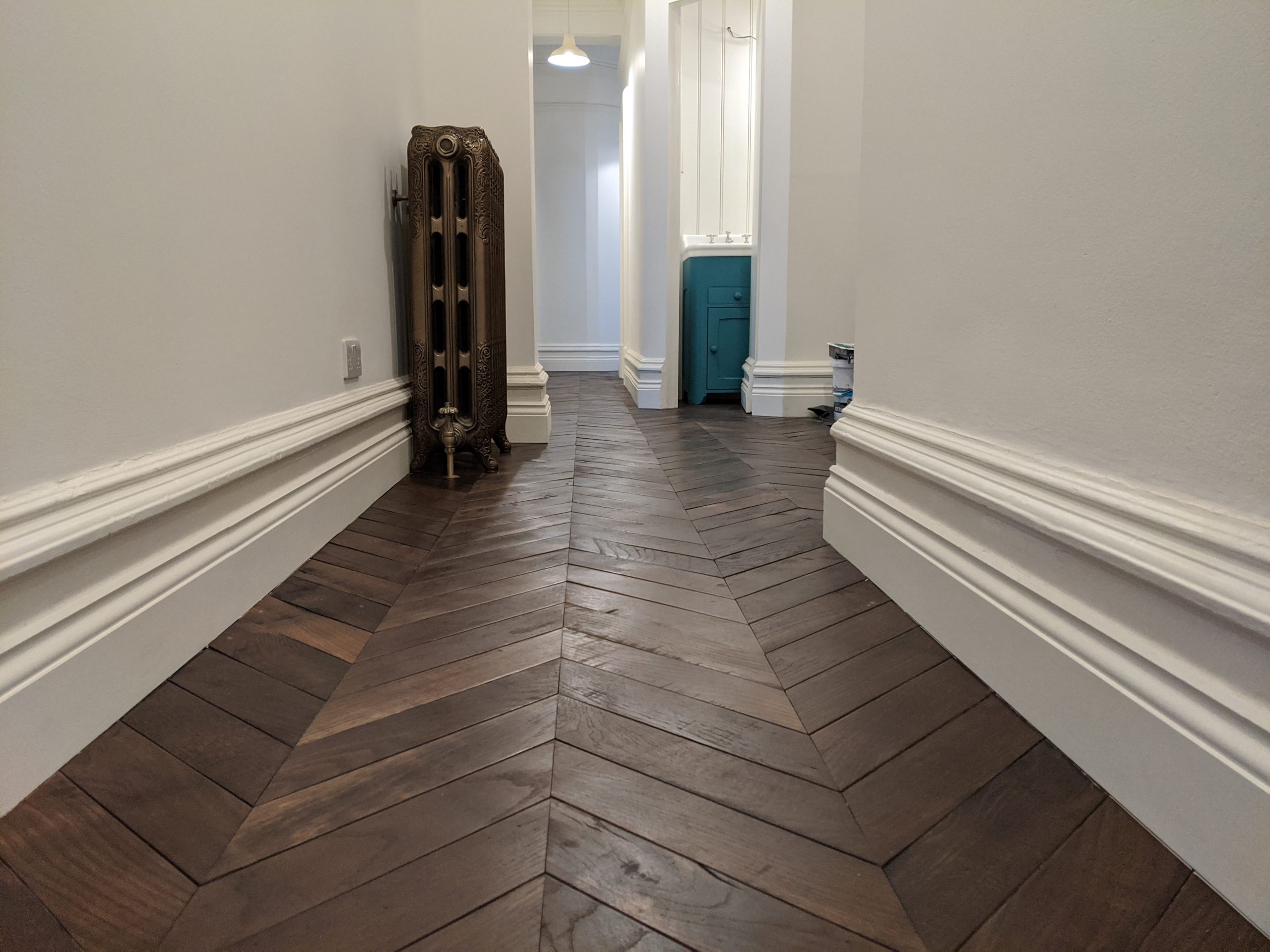
As more and more people re-evaluate their impact on the planet, environmental awareness and conscious consumption have increasingly been on the rise.
The use of natural material is at the top of the agenda — with designers, professionals, and homeowners embracing “greener” lifestyles and finding brilliant ways to incorporate organic textures whilst maintaining a more current aesthetic.
Besides being good for the environment, natural materials are durable, improve the microclimate of indoor spaces, and look stylish regardless of interior design and changing styles.
For many, this means not just using sustainably sourced products, but ones that last for decades without being shipped to the landfill.
Reclaimed timber, also known as salvaged, re-worked or antique wood, is the epitome of the world of natural materials and for obvious reasons. Not only is it the most renewable and sustainable resource you could possibly choose, but it evokes a profound sense of nature, has therapeutic properties, and ages beautifully, developing a wonderful patina over time.
Reclaimed wood flooring, reclaimed wood cladding, reclaimed wood siding, reclaimed wood beams, reclaimed wood stairs, reclaimed wood furniture — it’s everywhere… and it represents impactful stories of repurposing and making use of what would have otherwise been abandoned and wasted.
The use of reclaimed timber to finish and decorate both residential and commercial buildings isn’t a new concept, but it’s seen a surge in popularity especially with the green building and remodelling boom.
Reclaimed flooring (often oak, chestnut or pine) is simply “upcycled” wood finish with a past life used for a new purpose.
Perhaps it was a storage crate, wine barrel, retired ship or a part of a building, typically an old barn, factory, warehouse, and it is of good enough quality to be milled and fashioned into new antique floorboards.
For many, the true beauty of reclaimed timber is in its rich history as well as distinctive charm, beauty and narrative. Used in and around the home, the flooring provides whispers and echoes of the past and looks beautifully aged yet timeless. It is these character qualities that make reclaimed floorboards popular throughout the UK.
The use of sophisticated, warm wood textures lends a rustic look that almost seamlessly connects your living space to the natural world. For some, it’s more than the aesthetics — it’s the conservation element that makes reclaimed wood their number one choice for their next interior project. Still others, it’s its durability and strength that captures their attention and makes reclaimed floorboards a meaningful design component.
Unlike virgin floors from freshly cut trees, milling reclaimed floorboards have far less impact on the environment.
Traditional methods involved in the creation of floorboards can be a depleting process requiring enormous amounts of energy output for harvesting and an energy-intensive milling process.
The process of designing reclaimed floorboards bypasses this environmental harm. Many of the steps required to prepare the salvaged wood to relieve pressure on our forests and uses 13 times less cumulative energy. Having already survived through decades or even centuries growing in clean, pollution-free air and soil, the wood has also matured within the projects it has graced and taken on the glow of many years of exposure to the elements too.
This makes reclaimed wood flooring even more sustainable, as no extra trees need to be felled to create a beautiful wood floor with a look and feel that cannot be duplicated. After saving the wood from the demolished site, manufacturers set about reworking the old wood planks into exceptional reclaimed flooring, removing the nails and bolts, cleaning and finishing the wood, mostly by hand, and dried in a kiln to sterilise and ensure it is dried down to the proper moisture content intended for interior application.
Here it undergoes a plethora of delicate restorative and transformative techniques to obtain a good top and a good bottom. A lot of skill and creativity gives the wood a new lease on life, making the manufactured floorboards ready for yet more decades of experience in the heart of a newly built project.
Throughout the process of extending the service life of old timber into new floorboards, the wood retains carbon, keeping potentially harmful gas locked out of the atmosphere. This alone, makes reclaimed wood sit in a very strong position of what a truly, naturally sustainable product is all about.
Being recycled between key stages of its lifecycle and lasting for generations whilst ageing gracefully within the built environment makes reclaimed floorboards instrumental to the circular economy model. These environmentally friendly credentials also mean newly reclaimed floors can last another 100 years — meaning low energy and waste manufacturing as well as an overall happier and healthier planet.
The use of reclaimed timber offers a wealth of natural beauty and eco-friendly benefits. Some of the main advantages include:
Appearance
It is the timber prior history that enriches and enhances the natural beauty of reclaimed floorboards. Each plank embodies a distinctive characteristic while benefiting from the patina of old age growth. Reclaimed wood flooring creates a deeper experience and adds instant authenticity and personality wherever it is laid.
What’s more, its exceptionally tight grain, unique knots and swirls, rugged texture, organically weathered colour and patina adds a touch of “traditional allure and depth” to an interior environment, especially when paired with more modern furniture and objects.
Strong and durable
Aside from its aesthetic qualities, floorboards constructed from reclaimed timber are incredibly strong, dimensionally stable, and physically durable with better rot resistance than most newly harvested woods — being up to 40 points harder on the Janka hardness scale.
When old residences, warehouses and factories were built in and around the UK between the 18th-20th century, only the most stable and durable lumber cut from trees that grew for hundreds and even thousands of years were used so they could stand the test of time. The process of undergoing years of natural tempering and weathering means the matured wood has reached a point of being completely dried out and less prone to splitting or splintering.
Additionally, it is this great structural sturdiness that makes reclaimed floorboards a desirable option for high-traffic areas as it is able to better handle the wear and tear of everyday life while looking good for many years to come.
Environmentally friendly
As previously mentioned, reclaimed timber prevents the need for further depleting our natural forests by cutting down trees.
Knowing you’re using floorboards that would otherwise be unnecessarily burnt or enter landfills is an environmentally responsible choice that effectively contributes to the reduction of carbon footprint. Furthermore, wood that has already been harvested and treated restricts the need for refining chemicals which have a devastating impact on the environment.
The scale of environmental degradation is disheartening, in Europe as in the rest of the world. Our planet continues to suffer a great deal from the paradigm in which goods are bought, owned and disposed of.
As consumers become acutely aware of sustainable practices and corporate responsibility, the demand for products and services with lower environmental impact has gained momentum — and, in fact, consumers often demand — companies do better. The timber flooring industry has felt pressure to adapt to new ways of thinking about sustainable manufacturing by finding that elusive balance between people, profit and the planet.
Today, a growing number of companies are seeking out innovative ways of reutilising salvaged wood as well as new ways to make operations less harmful to the environment. More importantly, businesses are placing sustainability as an essential component of their corporate social responsibility plans and business strategies.
In implementing “Cradle to Cradle” solutions to improve their carbon footprint and providing safe and sustainable flooring options for a variety of needs, there has been a significant change in relation to environmental conservation. Ahead, we take a look at some of the leading businesses specialising in reclaimed floorboards in the UK.
1. The Reclaimed Flooring Company
The Reclaimed Flooring Company is proud to be the leading provider of the finest quality custom-milled floors for residential and commercial properties across the United Kingdom. We have spearheaded the quest for timeless, character-filled old wood with lasting value and are now market leaders in this specialist industry.
Part of Reclaimed Flooring Company core values includes bringing life back to this magnificent, unique material and turning it into something truly beautiful that carries a unique legacy. In a sense, our in-house team of highly skilled craftsmen integrate specialist finishing techniques and colouring processes to accentuate the unique qualities and innate beauty of reclaimed floorboards.
Whether it is reclaiming large beams from 17th-century barns, historical monuments, colonial homes or simply reclaimed old oak wine barrels, each antique board is hand-worked by highly-skilled craftsman to create a beautiful time-worn look and feel that will illuminate and bring character to any property.
Our work demonstrates the dedication to social, economic, and environmental responsibility. We recognise that forest certification preserves our nation’s past, and furthers its present goals for sustainability. All our flooring products are in compliance with VOC test requirements and qualify for LEED points under the materials and resources category, guaranteed to last.
Email: [email protected]
2. Authentic Reclamation LTD
Bringing reclaimed building material to the whole of the South East including Surrey and South London, Authentic Reclamation has been sourcing and supplying reclaimed building materials to the building, landscaping and private sectors for more than 30 years. Based on the Kent and Sussex border, the timber company houses an extensive stock of authentic reclaimed materials to bring design dreams and visions to life.
www.authentic-reclamation.co.uk
3. London Reclaimed Flooring
Located within 15 miles from Central London just on the outskirts of North London, London Reclaimed Flooring specialises in lifting and collecting all types of salvaged timber from a wide range of period properties, as well as supplying environmentally responsible timber products ideal for creating truly one-of-a-kind interior aesthetics.
With projects ranging from small home developments and conservation to retail stores and restaurants, this leading company in the Architectural Salvage & Reclamation business believes that antique floorboards not only accentuate the look and feel of your home or architectural project but are an essential link to ecological and environmental advances.
www.londonreclaimedflooring.co.uk
4. Encore Reclamation
After years of using contacts in a demolition business to source substantive and sustainable old pine and oak flooring for friends and family, husband and wife duo setup Encore Reclamation in the hopes to serve a wider range of designers, homeowners and professional businesses across the UK.
Located in the heart of London’s East End in a former Spratts dog biscuit factory, the company makes sourcing reclaimed building materials a fast, fun and financially viable process. If you’re on the lookout for character-rich reclaimed floorboards to give even a new build old soul, Encore Reclamation takes special pride in supplying premium quality products for any interior design and architectural project.
www.encorereclamation.co.uk
5. LASSCO
Established in London’s East End, LASSCO has dealt in reclamation since 1979. Bridging the gap between the demolition trade and architectural design, the company connect customers with rescued relics that make for fascinating interiors. Since its inception in the late 1970s, the company continues to be one of the UK’s leading providers of custom reclaimed floors with a showroom and design specialists in London’s East End.
www.lassco.co.uk
6. Salvo
By choosing only the finest reclaimed antique wood, Salvo is the marketplace for architectural antiques, garden, decorative, salvage and reclaimed building materials that bring out the inherent richness of nature.
Following the principle of “Reclaim, Reuse, Repeat”, Salvo helps designers and homeowners alike create buildings that will impress and last by providing demolition alerts, a worldwide directory of salvage-related businesses, as well as online platform where they can buy from trusted Salvo Code dealers.
www.salvoweb.com/antique-reclaimed
7. English Salvage
English Salvage works passionately to bring a historic era to retail and restaurant spaces, film set constructions, and residential projects. Quality and craftsmanship come first, and every process starts with sourcing the highest-quality timber and continues with precise milling that enhances the distinctive charm of each and every board — ensuring that you receive the most beautiful outcome for your architectural project.
www.englishsalvage.co.uk
8. Lawson’s Yard
Established over 70 years ago by Thomas Lawson senior, Lawson’s Yard is passionate about re-purposing material, reusing waste and minimising resources. Combining time-honoured techniques with modern machining, the Ormskirk-based company transforms salvaged and pre-loved lumber to consistently produce the finest quality reclaimed flooring, cladding, doors and furniture — ensuring that each final product is unique to each project and in keeping with a scheme’s design, ethos and heritage.
www.lawsonsyard.co.uk
9. The Main Company
Passionate about bringing you the highest quality, The Main Company has an outstanding reputation for crafting high quality reclaimed flooring ideal for both commercial and residential spaces. Nestled in the heart of Yorkshire, the company specialises in engineering reclaimed & rustic wood flooring.
A combination of knowledge, unrivalled passion and craftsmanship ensure that they deliver floors that have a story to tell and are meticulously handcrafted and restored to bring out the stunning patinas and rustic features that suit every space.
www.maincompany.com
10. The British Wood Flooring Company
The British Wood Flooring Company is one of the UK’s largest reclamation companies with a large stock of original, authentic and bespoke salvaged, reclaimed and upcycled timber including; antique wood flooring, Parquet block, Parquet de Versailles and bespoke solid wood floors for residential properties and mixed-use commercial projects.
With knowledge and exceptional experience in installing, refurbishing and finishing wood floors, The British Wood Flooring Company works closely with clients at every stage of the design process to complement their individual needs. From London townhouses to country cottages, new-builds and period properties — each board is created with alchemy to give a stunning and unique finish to every interior design environment.
www.britishwoodflooring.co.uk
Conclusion
Procured from retired ships, old barns, homes and commercial buildings of all kinds, reclaimed lumber wins points for sustainability.
With its everyday practicality, each one of the floorboards has its own character, offering a true one-of-a-kind design finish for both old and modern settings.
Reclaimed floorboards in the UK have transformed a wide array of interior design and architectural projects — from London Victorian townhouses and period properties to modern farmhouses and new-builds — and the fact that no new trees have to be harvested to design the flooring makes them one of the most sought-after salvaged building materials.
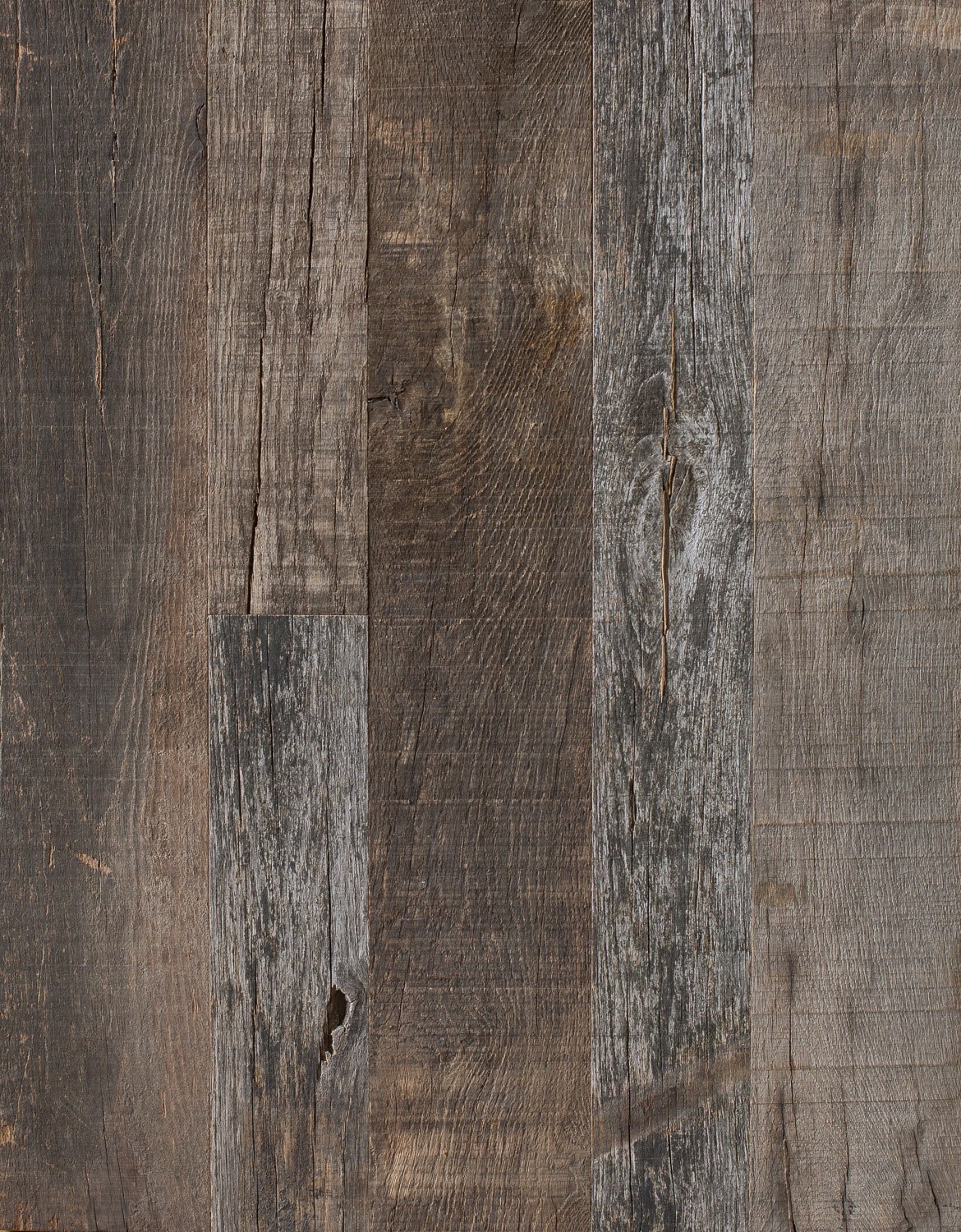
Oiled finish wood flooring has become an increasingly popular choice for most homeowners and builders.
Mainly because of the aesthetics of the pleasing natural and warm look and the fact that the oil finish helps make the real character of the wood stand out without any “plastic” shine.
A hardwearing option – when maintained correctly, it looks beautiful and adds a touch of sophistication to any room.
Treatment with wood oil is perfect for anyone who is seeking to retain and enhance the natural good looks and brings out the same beautiful look that many exotic wood species have.
The oiled finish option suits both reclaimed and harvested wooden floors, both solid and engineered options, no matter where you plan to install your new floors.
If an oiled finish is your choice of wood flooring, it’s crucial to keep the coating of your flooring in proper condition by oiling it regularly and minimizing the risk of scratches, scrapes and chips.
To help protect the coating on your floor, a thorough and regular cleaning regime is required to keep the floor free of dirt and dust.
Dust and grit are the worst on oil-coated wood floors as they act as an abrasive, serving to remove the oil coating and leave your wood flooring exposed.
How frequently the floor requires cleaning will ultimately determine the regularity of the re-oiling or oil-refreshing process required.
For peace of mind, we suggest applying a hard-wax maintenance oil every 6-10 months.
A well-oiled wood floor normally requires a regular vacuum and a thorough going over with a moist, not wet, mop to keep it looking amazing.
Ideally, the vacuum attachment should be a natural bristle brush or a type that will not scratch the floor.
When the hardwood floor needs more than just vacuum cleaning – that is, re-sanding and re-finishing; how often you require such drastic treatment depends upon the traffic, wear and tear and maintenance regime your floor has experienced.
If the oiled wood floor is looking really tired and in need of a complete revamp, here’s what you need to do:
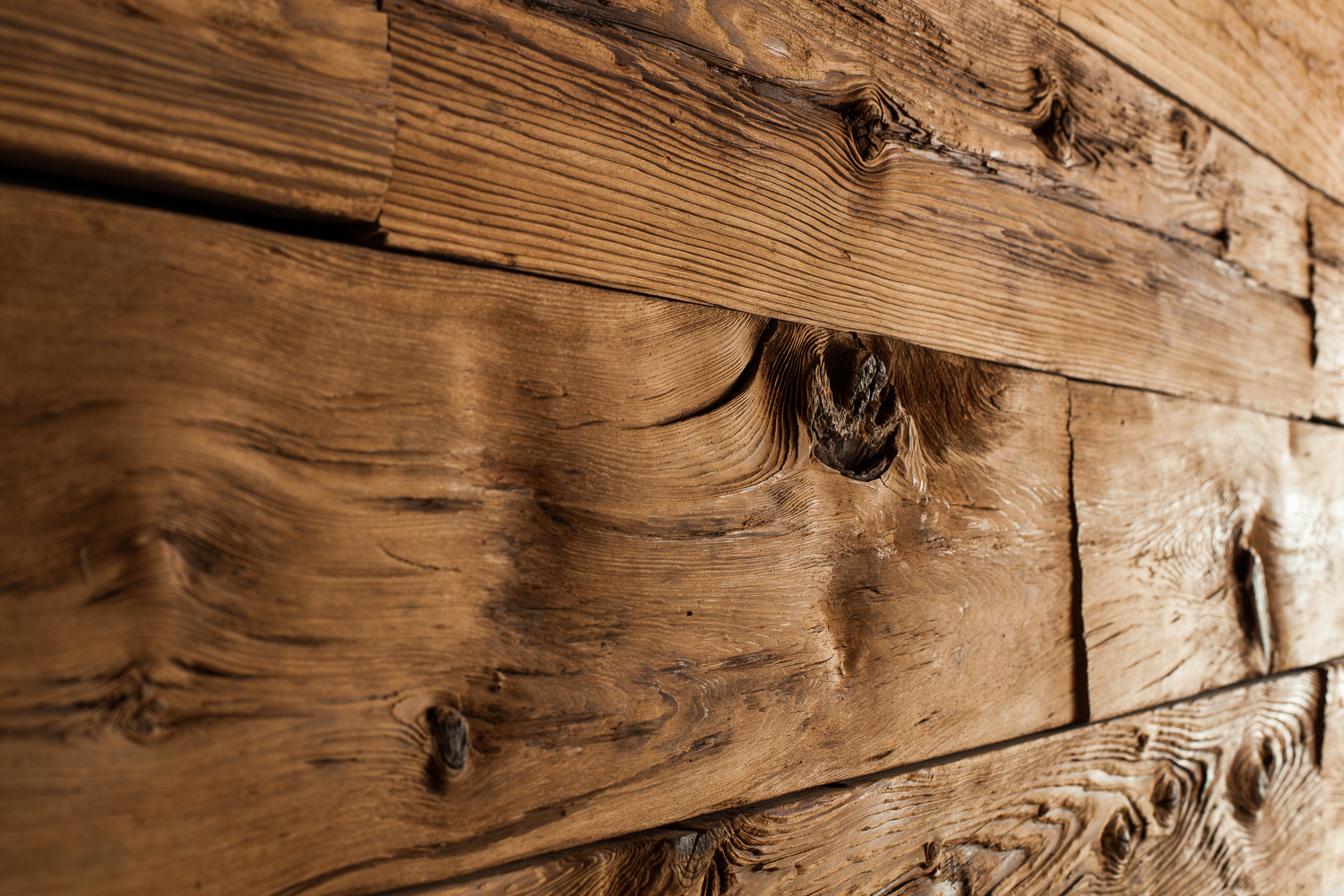
Reclaimed wood or lumber has a history and has been used for buildings and structures from the 18th to the early 20th century. The wood is recycled and reused to meet today’s ever-growing need for sustainable, eco-friendly homes and businesses.
Reclaimed wood shouldn´t be confused with salvaged wood, which has been cut and stored for several years but is not used for construction.
Today’s century-old reclaimed wood emerges from a time when wood was in abundance, both in North America and Europe, and was used as a primary building material.
As the Industrial Revolution took hold, sawmills were often the core of many towns, providing employment and a plentiful wood supply.
Most recycled flooring and wall panelling in homes, offices, bars, and restaurants come from the factories, warehouses, mills and railways of the USA and France and the industrial north of England.
In recent years, we’ve come to learn to protect our world, and there is less wood available for construction, so we’ve looked to the ecological equivalent of newly harvested wood – reclaimed wood.
Reclaimed wood is a stylish and popular choice to decorate and enhance commercial premises and modern homes.
Wood over 100 years old is particularly suitable for high-traffic areas due to its tight grain, making it resistant and hard-wearing.
Any wood species can be reclaimed, but some of the most common are Douglas fir, redwood, pine and oak.
A rare reclaimed wood species is longleaf (heart) pine, which can take up to 500 years to mature, as opposed to the more common yellow pine, which only takes 50 years.
Longleaf pine produced enormous trees in the past, meaning long and sturdy planks, which were the mainstay of the USA’s wood industry hundreds of years ago.
However, today, only 2% of its original planted area in the US is covered by this species, compared to 41% in the 1800s. This loss is immense and shows why using reclaimed wood is so important.
English oak trees are also rare and incredibly long-living, and they take up to 200 years to reach maturity. Making it arguably the longest-living tree you can find in the English landscape.
Oak is a popular choice for reclaimed wood and, in particular flooring due to its versatility in terms of finish and colouring. Much of our reclaimed oak flooring range comes from oak trees used for old buildings throughout Europe.
Besides the beautifully rustic character reclaimed wood lends to any building, modern or traditional, commercial or private, its ecological benefit is clear.
The environmental impact of mass forestation worldwide has heightened our awareness of how using reclaimed wood can help protect our future.
Coupled with this social responsibility is the desire for the authenticity of reclaimed wood that tells a story and has a history. Your kitchen floor could have once been the walls of a French railway station or your office wall cladding the beams from a barn or warehouse.
There are various reclaimed wood grades from different periods and backgrounds. It’s essential to consider the following when choosing reclaimed wood (which is what we do on your behalf):
When you buy your reclaimed wood from a specialist, you pay not to worry about potential defects. These are the most common problems with reclaimed timber that specialist suppliers look out for.
A reclaimed wooden floor or wall cladding makes a statement. As well as demonstrating excellent taste and a love for the character and finish of reclaimed wood, it shows your commitment to environmental matters.
Reclaimed wood is used for both residential and commercial projects alike. It can be used for interiors and exteriors as flooring, furniture or cladding.
The strongest feature of reclaimed wood is the tonal variation. We feel this should be embraced rather than combated. Depending on what you choose to finish the floor with (hard wax oil, traditional wax, lacquer), you will be able to even out the tone of the floor, but this will not be as uniform as pre-finished new wood.
You should ask your fitter about colouring options if you are concerned about achieving the right colour when using reclaimed wood.
Not all reclaimed wood is FSC certified; however, referring to their rules around reclaimed or recycled timber is helpful. For it to qualify as FSC-certified timber of post-consumer origin, reclaimed wood must have been used once and have reached “the end of its useful life” for its original purpose.
FSC-certified wood has met specific standards that guarantee sustainable practices were used in its creation. Using FSC-certified timbers in your building will earn you credits in the Leadership in Energy and Environmental Design (LEED) Green Building Rating System.
After carefully processing reclaimed wood into flooring, it is highly stable and can be installed like most solid and hardwood flooring.
The difference is that reclaimed wood can take two or three weeks to be ready for installation and acclimatise to the new environment and the humidity level.
Depending on the natural surface of the wood, some boards may require some hand scraping to even out a few of the edges.
Wood acclimation and installation are the two most important things to ensure your flooring lasts a lifetime.
Glue and Nails are the standards with Reclaimed Wood, but reading the supplier’s installation manual is always advisable.
* We do not recommend the floating methodology, as it is not a long-term solution.
Reclaimed wood floors are an excellent choice for kitchens and bathrooms.
Older reclaimed planks have naturally closed pores, which makes antique reclaimed wood great for kitchens and bathrooms.
However, sealing on-site is always advisable.
Like any new wood floor, reclaimed wood will perform and look its best with appropriate maintenance.
Wood finishing, indoor foot traffic, and usage level are the few things that will direct a care and maintenance program.
The proper care goes a long way and can help keep your floors great for decades.
For more information on after-care, use this link:
Not all reclaimed wood is Antique, and very few understand the difference. Most of our antique wood is at least 300 to 400 years old, and just like with a centuries-old Antique cabinet, a limited material supply is available.
Unlike other reclaimed collections that are easier to procure, they are cut from old structural beams.
As with any skilled Antique restoration, working with antique wood requires many skills for the thousand judgment calls one must consider when uncovering such timeless beauty piece by piece.
Because wood is a natural organic material, the Leadership in Energy and Environmental Design (LEED) considers solid wood an inherently non-emitting source for Volatile Organic Compounds (VOCs).
This means that it doesn’t give off any pollution; more than this, wood can absorb toxins from our environment.
These low VOCs can be affected by products added to the wood, like a finish, fire retardant, substrates or glue.
It is worth checking your supplier’s environmental credentials to ensure they do all they can to keep VOCs to a minimum.
Reclaimed wood can be expensive because of the work of reclaiming and refinishing it.
There are costs associated with the transportation, storage and artisanal skills involved in creating reclaimed wood products, which affect the price and value of the product.
Reclaimed flooring costs between two and three times as much as conventional flooring. But this varies hugely depending on many variables.
The price of reclaimed wood products can be affected by lots of factors, including:
Prices also vary between companies. Generally, you will spend a little more than you would on new wood because of the extra work and skill involved in salvaging wood, treating it and restoring its beauty.
One of the beauties of reclaimed wood is patterns, lines, and markings tell its unique story. This story doesn’t end when this wood is brought into a home; it just starts a new chapter.
Reclaimed wood can continue to change colour or weather, depending on the wood used, the chosen treatments, and how regularly the wood is maintained.
The LEED program is a well-recognised rating system for sustainable building. Architects and designers can increase their chances of a whole project qualifying for LEED certification by using reclaimed wood products in their projects.
The WELL Building Standard measures and certifies features of the built environment that impact human health and well-being. It is well-documented that bringing wood into our homes and office spaces suits our physical and mental well-being.
Living Building Challenge (LBC) is a comprehensive sustainable building standard designed to encourage building practices that enhance community life and benefit the planet.
LEED, WELL and LBC were all created to work harmoniously with each other, and reclaimed wood products show how well they do this.
With LEED rewarding the sustainability of reusing precious materials, WELL recognising the well-being-boosting properties of wood and LBD rewarding the community and planetary impact, they help to illustrate how valuable a reclaimed wood product is.
As both WELL Building Standard and Living Building Challenge (LBC) have biophilic design focuses, the certification helps illustrate how reclaimed wood is an impactful and logical solution for bringing nature into a space.
It has now been proven that it also can enhance our wellness. Maybe this is why it’s so tempting to stroke a smooth wooden bannister or to feel the finish on a bespoke piece of joinery.
With the growth of biophilic design, architects and designers are increasingly considering wellness.
Low VOC materials are being chosen over their more highly manufactured and polluting counterparts, and elements that enhance daylight’s impact and allow for proper ventilation are considered essential, especially in our post-pandemic world.
Biophilia explains our connection to nature and opposes the industrial minimalism that has become the norm in our built environments over the preceding decades. As the hard lines and artificial lighting that minimalism promoted are not found in nature, we now understand why they adversely affect everything from communication to mental health to productivity.
The studies in Japan revealed that wood serves as a de-stressor and has been shown to lower blood pressure, while Canadian studies yielded similar results: wood contributed to lower heart rates and stress responses than environments with no wood.
While these results focus on wood in general, we have seen anecdotally that Reclaimed wood can deliver emotional connection and, therefore, a more significant biophilic effect. Because reclaimed wood has a history and a story, its history enhances the occupant’s experience in the space in an authentic and meaningful manner, making them not just feel better but be better.
With just over 2200 Certified B Corporations globally, B-certified products are still hard to come by.
While reclaimed wood’s eco credentials make it an ideal candidate for B Corp certification, there aren’t currently any Reclaimed wood suppliers listed among the 2200 B Corp-certified companies.
This could be because B Corp certification measures far more than just the regenerative nature of a business. It also weighs a company’s inclusivity and equitability to measure its social and environmental impact.
There are, however, several architecture, design and building companies recognised with B Corp certification, including:
Seeing so many companies associated with the traditionally damaging construction industry being recognised with this certification is a sign that the industry is moving in the right direction.
Absolutely, reclaimed wood can be crafted into all kinds of joinery, from simple items like kitchen countertops, shelves, and doors to intricate pieces such as staircases and furniture.
However, not every type of wood may suit your project, so it’s crucial to discuss with our team to understand the extent of customization possible.
At The Reclaimed Flooring Company, we believe in the tree’s soul; we feel that this phrase perfectly represents our brand values, such as Slow Design & Slow Living, Timelessness, Generosity, Reciprocity, Sustainability, Humility, and Community.
We promise to ethically beautify, inspire, craft, make and install with the tree’s soul in mind.

From towering trees to polished planks, the story of wood flooring is often one of transformation, but unfortunately, it is also one of waste.
Remember the last time you bought ‘premium’ wooden flooring? Those perfectly uniform planks with no knot in sight?
In our pursuit of flawless uniformity, the wood flooring industry has historically overlooked a hidden treasure trove of beauty and sustainability: the “imperfections” that make each piece of wood unique.
What if I told you those flawless boards represent one of the most wasteful practices in interior design?
It’s time we discussed zero-waste design, a movement gaining traction and making us rethink our living spaces.
Zero-waste design isn’t just about re:cycling or re:ducing rubbish—it’s a bold reimagining of how we create and value things.
At its core lies a radical idea: what if we could design in a way that leaves nothing behind?
Something remarkable is happening in Philadelphia’s BOK building. Lobo Mau, traditionally a clothing brand, is transforming its textile remnants into stunning furniture pieces.
They’re shredding leftover fabric to stuff pillows and reupholstering vintage furniture with hemp blends. It’s a brilliant example of how ‘waste’ can become extraordinary.
The zero-waste movement transforms everything from fashion to furniture, challenging our obsession with flawless uniformity.
But nowhere is this shift more striking than in our homes, particularly how we think about wood flooring.
You might be surprised to learn that up to 30% of wood is discarded in traditional flooring production. That’s not just installation off-cuts—it’s perfectly good wood rejected simply because it doesn’t meet arbitrary aesthetic standards.
These “rejected” pieces often feature the most captivating elements of the tree’s natural story – rich knots, dramatic grain patterns, and distinctive colour variations.
Think about that for a moment.
For every 100 square metres of premium flooring, up to 30 square metres of wood might be wasted. It’s like throwing away perfectly good vegetables because they’re not quite the right shape for supermarket shelves.
Zero waste isn’t simply about recycling or reducing rubbish. It’s a comprehensive approach to design and manufacturing that considers the entire lifecycle of materials.
As Nicole Haddad of Lobo Mau puts it,
“If sustainability is not considered in the design of a product, we consider that to be a design flaw.”
This philosophy is gaining traction across industries, driving innovation and creativity unexpectedly.
In textiles, designers meticulously craft patterns that utilize entire pieces of fabric, minimizing scraps and maximizing resource efficiency.
Furniture makers are embracing ingenuity, finding innovative ways to repurpose every scrap of material, from offcuts to sawdust.
Even mattress manufacturers like Avocado Green Mattress are joining the movement, transforming leftover wood from bed frames into stylish, functional furniture.
This holistic approach is now re:shaping the wood flooring industry, challenging traditional practices and encouraging a more sustainable and aesthetically rich design approach.
By embracing wood’s natural variations and minimizing waste at every stage, from sourcing to installation, zero-waste design transforms our floors and our relationship with the natural world.
The most captivating parts of wood are often the ones we’ve been taught to avoid.
Every knot, colour variation, and distinctive grain pattern tells the unique story of a tree’s life – rather than fingerprints, no two pieces are exactly alike.
The maths behind traditional wood flooring is quite shocking.
While suppliers suggest ordering 10% extra for wastage during installation, the manufacturing process bins nearly a third of each tree.
Between 28% and 32% of perfectly good wood never makes it to our homes simply because it doesn’t match our rigid ideas of perfection.
But things are changing.
We create floors celebrating these natural characteristics by mixing different plank widths and embracing wood’s natural variations.
Each knot and grain pattern adds depth to the space, creating rooms that feel more connected to nature.
Our approach celebrates wood in its natural state, embracing the characteristics that others might reject.
We transform what the industry typically discards through careful sorting and thoughtful design into striking features.
The result is flooring that is not only environmentally conscious but also respects “the soul of the tree.”
Zero-waste design isn’t just about reducing environmental impact—it’s about changing how we see beauty in our homes.
It’s about recognising that perfection doesn’t mean uniformity and that character often comes from what others might consider flaws.
The next time you choose flooring, furniture, or home décor, consider products that embrace zero-waste principles.
These thoughtfully designed pieces add sustainability and unique character to your space.
Remember, as with all meaningful changes, the shift towards zero waste design starts with small steps.
Whether you’re a manufacturer, designer, or homeowner, every decision to reduce waste matters.
After all, the most sustainable option is often the most beautiful.
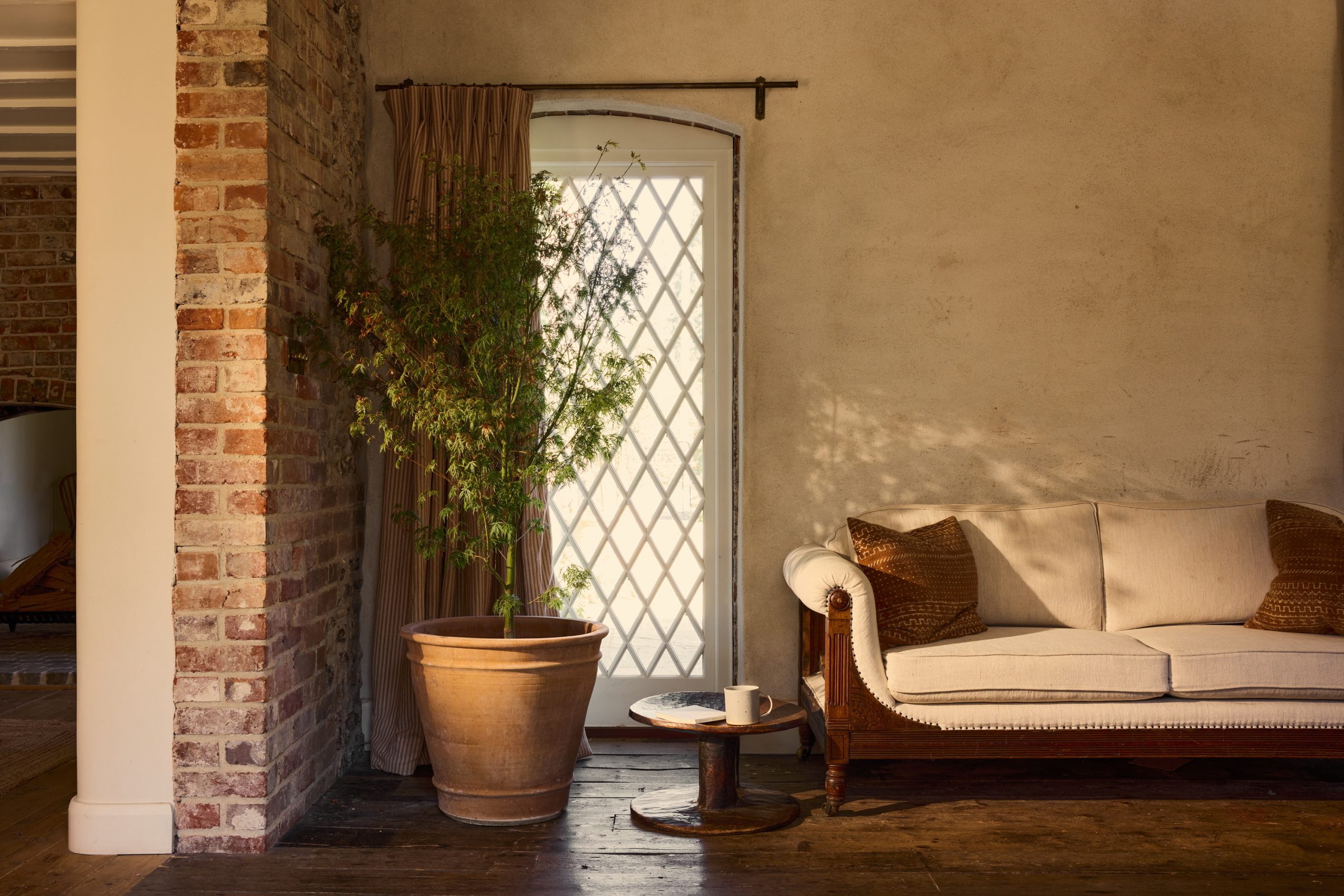
Reclaimed furniture is making its mark in the world of interior design, especially in the context of ephemeral spaces—places that are designed to be temporary, such as pop-up shops, event venues, or short-term rentals.
Brands like Soho Home and Zara Home have begun integrating reclaimed pieces into their collections, reinforcing the growing trend of sustainable, unique furniture.
Their adoption of reclaimed furniture highlights its positive impact and signifies a shift in mainstream interior design towards sustainability and craftsmanship.
Unlike mass-produced items, each reclaimed piece is unique, with its own dimensions and movement, reflecting the care and artistry of its creation.
This move from major brands is a powerful affirmation of the value of craftsmanship, sustainability, and authentic design.
But beyond the surface, a deeper narrative unfolds about why reclaimed furniture is gaining such traction, how it aligns with the growing concept of “quiet luxury,” and where this trend is headed.
At its core, reclaimed wood furniture is about breathing new life into old materials.
Whether it’s wood salvaged from deconstructed barns, metal pulled from industrial buildings, or fabrics rescued from discarded items, each piece carries a history.
Unlike new, factory-made furniture, reclaimed items tell a story, often rich with texture and imperfection.
These marks of wear and tear aren’t flaws. They are a testament to the materials’ durability and journey.
Reclaimed furniture allows designers and consumers to engage with the past in a very tangible way.
It transforms discarded materials into something useful and beautiful, tapping into a sense of nostalgia and authenticity that’s hard to replicate with new materials.
For designers like Axel Vervoordt, known for his minimalist, earthy interiors, this aesthetic fits perfectly with his philosophy of “wabi-sabi”—a Japanese concept that celebrates the beauty of imperfection and impermanence.
Reclaimed furniture is not just sustainable. It represents a shift toward valuing movement, soul, character, provenance and craftsmanship.
These pieces are not throw-away items.
They are original and adequately created without shortcuts, embodying a form of conscious capitalism that values longevity and durability. Unlike fast, disposable furniture, which prioritises cost-cutting and quick production, reclaimed pieces focus on long-term value—both for the consumer and the environment. This is the true essence of slow design and slow production.
In the context of ephemeral spaces, reclaimed furniture becomes a powerful adversary.
Reclaimed furniture creates a sense of permanence and grounding.
Several factors drive the growing interest in reclaimed furniture, and the reasons extend beyond aesthetics or trends.
Sustainability is one of the most significant drivers.
As awareness of environmental issues like deforestation, landfill waste, and carbon emissions increases, consumers are becoming more mindful of their purchases’ impact on the planet.
Reclaimed furniture offers a solution—by using existing materials, the demand for new resources is reduced, and waste is minimised.
This eco-conscious mindset is becoming more prevalent among younger generations, increasingly prioritising sustainability in their purchasing decisions.
There’s also a growing awareness of the value of craftsmanship.
Reclaimed furniture will always require a high level of skill and artistry that mass-produced items simply can’t mimic.
Most reclaimed pieces are handcrafted, ensuring that no two are exactly alike. This uniqueness adds to their appeal, particularly in a world where mass production has often led to uniformity and sameness.
The individuality of each reclaimed piece is a draw for consumers who want their spaces to reflect their personality and values.
Moreover, reclaiming fits well with the broader cultural shift towards minimalism, slow design, and intentional living.
In a world often overwhelmed by excess, many are drawn to owning fewer but more meaningful items.
Slow design and slow production have become increasingly essential concepts.
Slow design emphasises sustainability, using locally made, often organic, and vegan materials.
This approach aligns perfectly with the ethos of reclaimed furniture—valuing quality, thoughtfulness, and a deep connection to nature.
A new design philosophy has gained momentum recently: quiet luxury.
Unlike traditional luxury, often associated with opulence and bold designs, quiet luxury is about subtlety and timelessness.
It’s about pieces that don’t necessarily demand attention but, upon closer inspection, reveal their quality, craftsmanship, and thoughtfulness.
Reclaimed furniture aligns seamlessly with this concept of quiet luxury.
There’s something inherently luxurious about owning a piece of furniture thoughtfully crafted from materials that have stood the test of time.
The story behind the materials, the craftsmanship involved in transforming them, and the uniqueness of each piece combine to create an experience of luxury beyond surface-level aesthetics.
For designers like Rose Uniacke, who is known for her understated yet sophisticated style, reclaimed furniture perfectly embodies this philosophy. Her interiors often feature reclaimed pieces that add warmth and character without overwhelming the space.
Each reclaimed piece has its dimensions, movement, and history.
These characteristics make every piece non-replicable, embodying the individuality that mass-produced items cannot achieve.
The craftsmanship evident in every joint, curve, and imperfection shows respect for the original materials—the tree’s soul.
Natural patterns, grains, and even wood movement are honoured and preserved, creating furniture that speaks of authenticity and lasting beauty.
As reclaimed furniture continues to gain popularity, there is also a growing demand for bespoke solutions.
Bespoke joinery—custom-made woodwork designed specifically for a space—allows clients to have pieces tailored to their specifications.
When paired with reclaimed materials, the result is furniture that is not only sustainable but also ideally suited to the client’s needs and aesthetic preferences.
Each bespoke piece can be designed considering a space’s specific dimensions and characteristics, ensuring a perfect fit both functionally and aesthetically.
Moreover, bespoke solutions allow even greater creativity when working with reclaimed materials.
For example, wood with irregular grains or textures can be incorporated into a design to highlight its uniqueness and enhance the piece’s overall look.
Combining bespoke craftsmanship and reclaimed materials is the ultimate expression of sophistication and sustainability for clients seeking quiet luxury.
It reflects a commitment to quality and individuality and ensures that the furniture will stand the test of time, both in terms of durability and style.
Looking ahead, reclaimed furniture will continue to play a major role in the design of timeless spaces.
As more brands and designers embrace sustainability, the demand for eco-friendly and stylish furniture will only increase.
Reclaimed materials offer a solution that is not only sustainable but also rich in character, making them ideal for spaces that seek to create a lasting impression, even if they are only temporary.
We can also expect to see more innovation in using reclaimed materials.
Designers are constantly finding new ways to repurpose materials that might have previously been considered waste, strengthening the ideas behind the circular economy.
The possibilities are endless.
This creativity ensures that reclaimed furniture remains fresh and exciting, even as the trend becomes more widespread.
Reclaimed furniture is more than just a trend.
It’s a movement towards sustainability, craftsmanship, and quiet luxury.
It provides a sense of grounding and permanence while offering a sustainable and ethical alternative to mass-produced furniture.
As the design world continues to evolve, reclaimed materials will play an increasingly important role, shaping the future of interior design in beautiful and responsible ways.

Can you think of a future where the walls of your home are grown from algae, your flooring is made from materials that naturally decompose, and your furniture not only looks beautiful but also improves the air you breathe?
This isn’t a distant dream.
Biomaterials are emerging as the future of sustainable interiors. These materials, derived from natural sources like plants, fungi, and algae, offer a renewable and eco-friendly alternative to conventional building materials.
Unlike traditional options that often rely on finite resources or synthetic processes, biomaterials are created from organic matter that can be sustainably harvested, processed, and, ultimately, returned to the earth.
Whether it’s bioplastics made from corn starch, mycelium-based insulation, or bamboo flooring, these materials promise to reduce our environmental footprint while offering unique aesthetic and functional benefits.
However, among the various biomaterials gaining traction, one stands out for its versatility and potential to reshape the future of interior design: Algae.
There are about ten different types of algae in nature, from extensive underwater kelp forests to microscopic phytoplankton.
Algae can help fight climate change by absorbing at least twice as much carbon dioxide as most land plants.
Research indicates that just one acre of algae has the potential to capture up to 2.7 tons of carbon dioxide daily.
Simple yet powerful, algae is not just another eco-friendly option. It is set to redefine how we think about the spaces we live and work in.
Rapid Renewability: Algae, especially kelp, is among the fastest-growing organisms on Earth. It offers a bountiful and renewable resource that can be harvested sustainably without harming ecosystems. Its rapid growth rate makes it an exemplary candidate for sustainable material production.
Biodegradability and Positive Environmental Impact: Algae-based products are designed to decompose naturally, significantly reducing long-term environmental damage. Unlike synthetic materials that linger for centuries, algae products gracefully return to the earth, leaving minimal trace and toxicity.
Aesthetic Versatility: Contrary to its humble origins, algae possesses an inherent beauty that can be transformed into an array of stunning products. From elegant furniture pieces to decorative accents, algae’s unique textures and colours add a touch of natural sophistication to any interior.
Biophilic Design Integration: The concept of biophilic design, which incorporates natural elements to enhance human connection to nature, finds a perfect ally in algae. Using algae-derived materials, designers can craft spaces that not only promote well-being but also create a profound sense of connection with the natural world.
The potential of algae extends beyond its current applications.
As we advance towards more innovative homes, algae’s compatibility with emerging technologies paints a future where sustainability meets innovation.
Imagine temperature-responsive algae fabrics or energy-efficient insulation—integrating seamlessly into homes that adapt to our needs while respecting the planet.
Moreover, the production of algae biomaterials is inherently energy-efficient, typically requiring less energy than the manufacturing of plastics or metals, thus further diminishing our ecological footprint.
Algae biomaterials are not merely an alternative; they are the vanguard of a major shift in interior design towards sustainability without sacrificing style or functionality.
As we face increasing environmental challenges, algae offers a blueprint for a greener, more thoughtful approach to design.
By embracing algae, we make a profound statement about our commitment to the planet, championing designs that are as sustainable as they are aesthetically pleasing.
De Man, L. (n.d.). Biobased Creations by New Heroes. Retrieved from https://biobasedcreations.com/
Hoogvliet, N. (n.d.). Exploration of seaweeds in reshaping the textile industry. Retrieved from https://www.designhotels.com/culture/conscious-future/will-biomaterials-build-our-future/
IntechOpen. (2019). Algae as a sustainable resource for bio-based products. In Biomass for Bioenergy – Recent Trends and Future Challenges (pp. 1-16). IntechOpen. https://www.intechopen.com/chapters/65952#B2
Frearson, A. (2016, July 17). Sea Me furniture by Studio Nienke Hoogvliet is woven from seaweed. Dezeen. https://www.dezeen.com/2016/07/17/sea-me-furniture-studio-nienke-hoogvliet-design-seaweed-woven-algae-table-chair/
Notpla. (n.d.). Natural & sustainable packaging made from seaweed and plants. https://www.notpla.com/
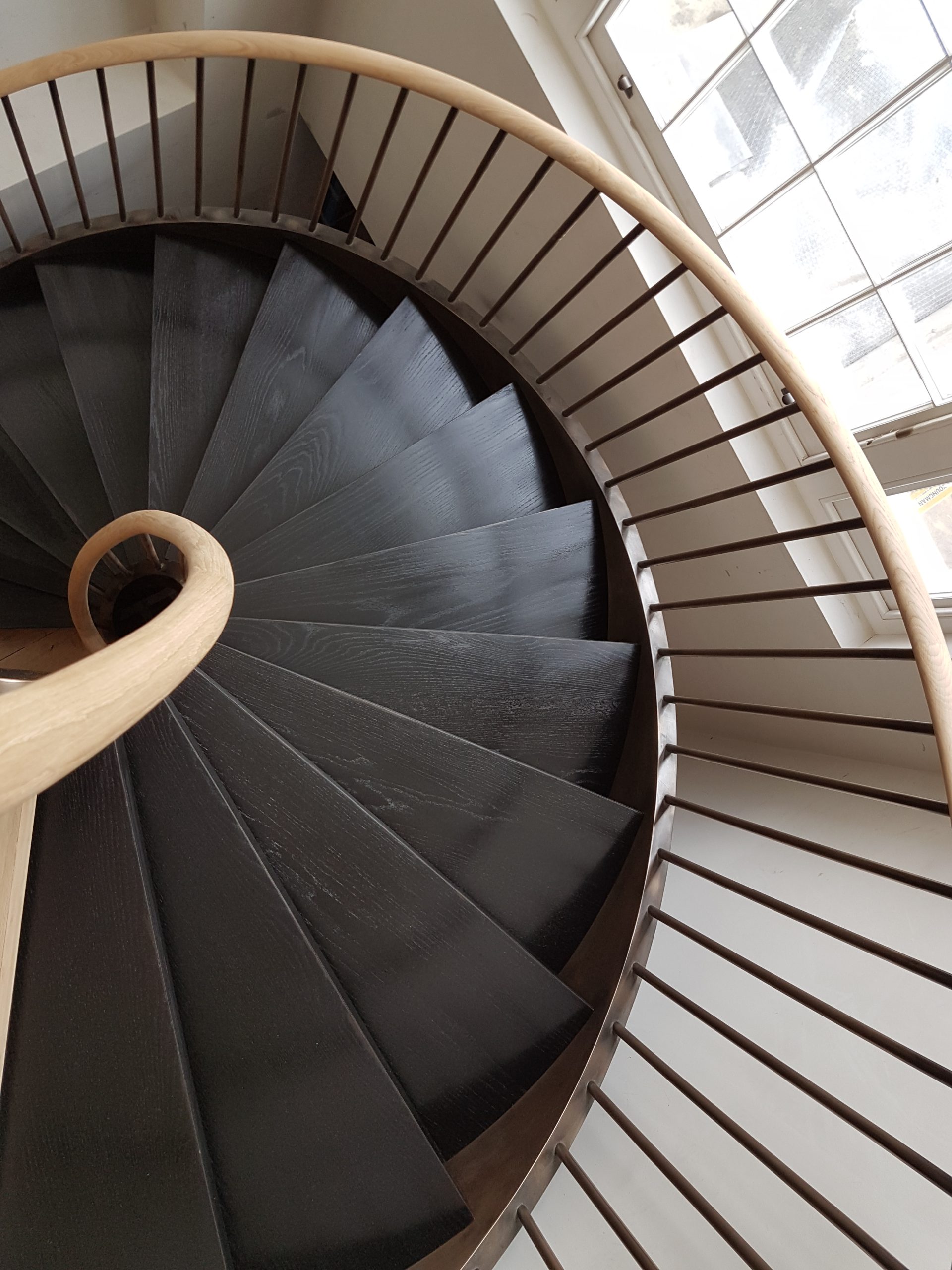
“In every piece of wood, there is a story,” — Arianna Huffington once reflected. And what better way to tell your own story than through the spaces you inhabit?
The days when a feature wall or throw cushions sufficed for home personalization are long gone.
Today, in an increasingly cookie-cutter world, homeowners crave authenticity, demanding spaces that accommodate and vividly express their lifestyles.
Bespoke joinery and furniture crafted from reclaimed materials are at the vanguard of this transformative movement. Each piece resonates with unique stories and an irreplaceable charm.
Consider your favourite pair of jeans, perfectly moulded to your shape over time. Similarly, personalized spaces are like a second skin—comfortable, familiar, and uniquely yours. “A room should never allow the eye to settle in one place. It should smile at you and create fantasy,” renowned designer Juan Montoya once said. Personalized spaces invite you into a narrative woven through every meticulously chosen element.
There’s a profound yearning for spaces that tell a story. Homes stand distinct with pieces that narrate history and character. Old Victorian schoolhouse floorboards are being repurposed into statement dining tables, and weathered barn doors transform into sliding partitions, introducing rustic flair to modern living spaces.
At the core of creating personalized spaces lies the art of bespoke joinery. It’s about tailoring custom-made furniture to fit your space and lifestyle perfectly.
Steve Jobs famously said, “Design is not just what it looks like and feels like. Design is how it works.”
Bespoke joinery embodies this philosophy, ensuring every piece fits aesthetically and enhances functionality.
For example, bespoke joinery can ingeniously maximize a compact kitchen space with custom cabinetry or create a striking bookcase that becomes the living room’s focal point.
Artem Kropovinsky, founder of Arcsight, underscores the value of bespoke solutions: “They maximize the potential offered by your space and create standout items that you definitely won’t see anywhere else.”
The resurgence in bespoke joinery heralds a renaissance of craftsmanship in furniture making. Unlike mass-produced items, each piece of custom furniture is crafted, often by a single artisan or a small dedicated team, ensuring a personal touch and unmatched quality.
This is not merely purchasing furniture; it’s an investment in the craftsmanship and vision of skilled artisans.
Reclaimed materials bring an undeniable charm to spaces, their imperfections adding layers of depth and intrigue.
“There is beauty in imperfection,” Huffington states, and these materials, with their worn textures and marks from past lives, are a testament to this beauty. Each piece carries a history, a narrative etched into its very fibres.
While bespoke furniture forms the foundation, colour and texture breathe life into personalized spaces.
The key lies in choosing hues and finishes that resonate on a personal level, crafting a space that feels like an extension of oneself. The interplay of textures—smooth concrete against plush rugs or sleek glass juxtaposed with rough-hewn wood—creates a rich, sensory environment that truly feels like home.
The trend towards bespoke joinery and reclaimed wood also reflects a growing concern for sustainability.
These pieces are tailored to personal aesthetics and built to last, potentially becoming heirlooms.
This approach respects the craft and honours the resources by extending their life and reducing waste.
Creating a personalized space is akin to crafting a narrative. It begins with a vision inspired by a rustic cabin or sleek, modern aesthetics.
Gathering inspiration, envisioning the final space, and collaborating with artisans specializing in bespoke joinery and reclaimed materials transform these visions into reality.
Bespoke joinery and reclaimed wood will undoubtedly continue to shape interior design, marrying personalization with sustainability. “Luxury must be comfortable. Otherwise, it is not luxury,” Coco Chanel famously said.
True luxury in our homes comes from pieces that tell a story, embody our values, and stand the test of time.
As we strive to create more personalized, sustainable, and meaningful living spaces, bespoke joinery and reclaimed wood remain not merely a trend but a profound shift in our approach to interior design, ensuring our homes are as unique as the stories they tell.
References:
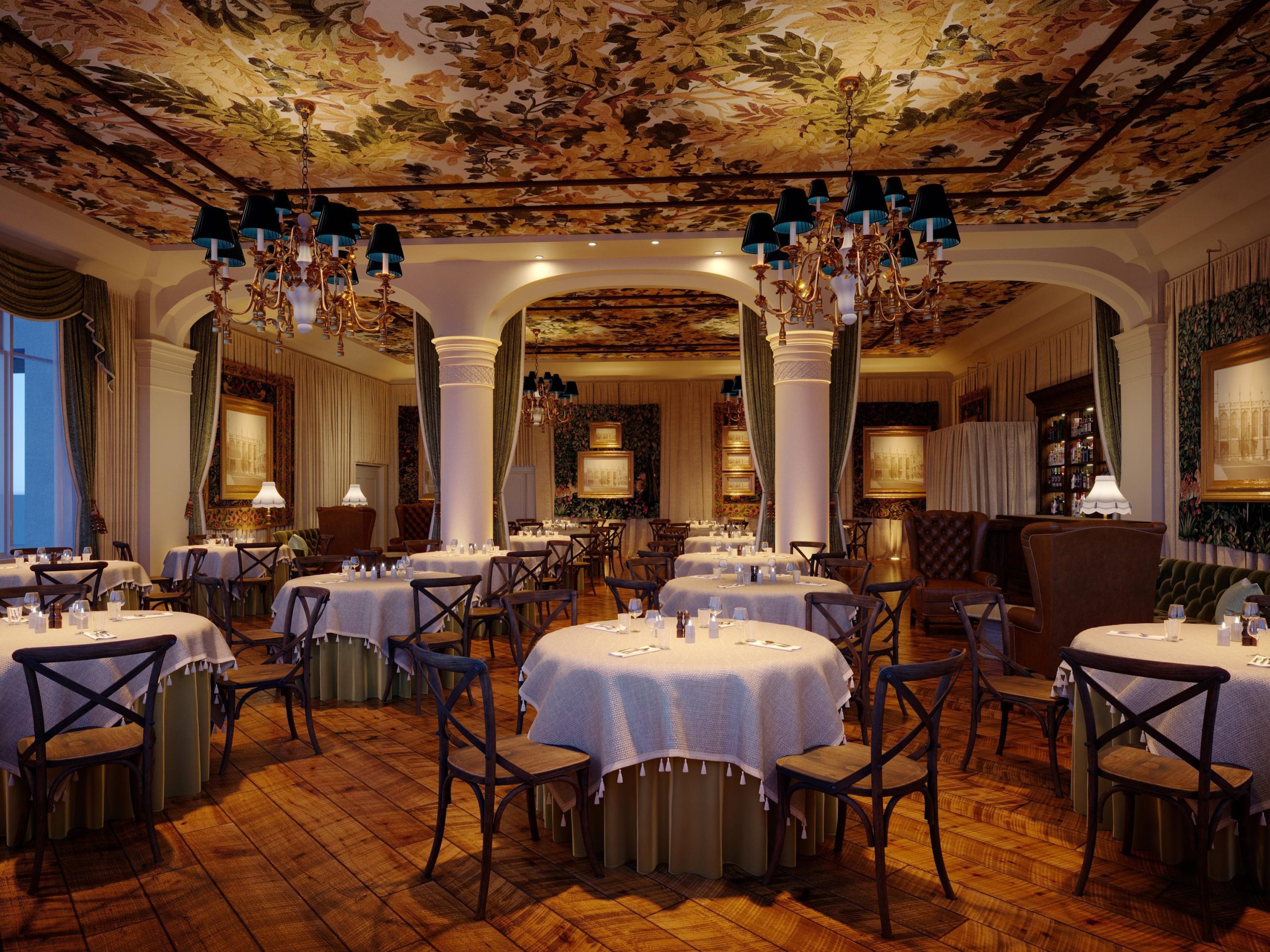
“Step with care and great tact, and remember that life’s a great balancing act.” — Dr. Seuss
Venture into the grand halls of the Victoria and Albert Museum in London, and you’re enveloped by an aura of artistic majesty—not just from the artefacts displayed but from the very ground beneath your feet. Here, European oak flooring lays the foundation, exuding a richness and warmth that syncs perfectly with the grandeur surrounding it. Each plank tells a story, and each grain sings a song of timeless craftsmanship, offering more than just aesthetics but a tactile history that resonates with every step.
This isn’t a luxury reserved for galleries and museums; this same timeless elegance can grace your home or office, transforming everyday spaces into bastions of sophistication.
Often considered the “little black dress” of interior design, European oak flooring offers unmatched versatility and style. Whether your home whispers modern minimalism or echoes a rustic charm, European oak adapts effortlessly, enhancing any decor. It remains a perennial favourite in the fluctuating tides of interior design trends, reflecting Arianna Huffington’s view that “life is a dance between making it happen and letting it happen.”
Each plank of European oak is a masterpiece, displaying unique patterns and shades—from honeyed tones to deep, earthy browns. This diversity ensures no two floors are identical, each bringing its character and warmth to the spaces it inhabits.
European oak isn’t just about good looks; it’s built to last. Known for its durability, it stands up to the daily wear and tear of busy life—children, pets, and all. It’s a flooring choice that combines beauty with resilience, echoing Huffington’s principle that “we need to accept that we won’t always make the right decisions, but understanding that failure is not the opposite of success—it’s part of success.”
As Tim McKeough insightfully puts it, “The floor is the base upon which all other decorating decisions are built. Change your floors, and you change the character of your home.” Choosing between engineered and solid oak flooring hinges on several factors:
When integrating European oak flooring into your home, consider the following:
European oak wood flooring embodies a blend of timeless elegance and robust functionality. Whether you prefer the engineered variety for its practicality or the solid type for its enduring charm, European oak offers a foundation that supports and enhances every aspect of your living space.
Immerse your home in the enduring beauty of European oak and step into a world where every plank tells a story. With European oak, every room becomes a canvas for history and artistry, transforming your living space into a place of beauty and character.
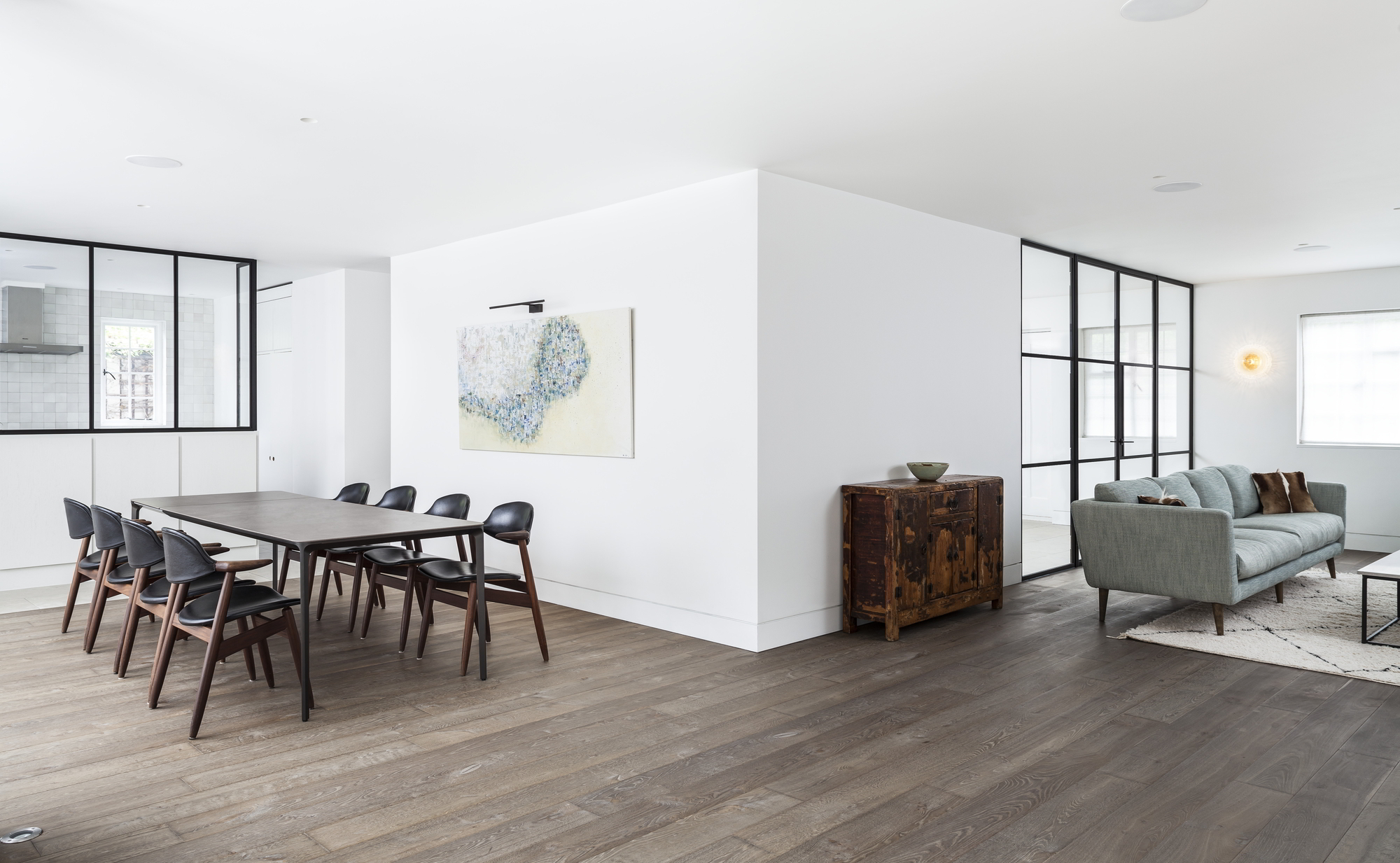
“The oak sleeps in the acorn. The bird waits in the egg, and in the highest vision of the soul, a waking angel stirs. Dreams are the seedlings of realities.” — James Allen.

Our Reclaimed Wood

Our Reclaimed Wood
When envisioning the perfect flooring for your sanctuary, oak stands as a pillar of elegance and resilience. Its natural beauty, rich tones, and pronounced grain patterns offer a foundation of undeniable charm and durability. As Arianna Huffington once noted about the enduring nature of beauty, “We need to accept that we won’t always make the right decisions, that we’ll screw up royally sometimes – understanding that failure is not the opposite of success, it’s part of success.”
Reclaimed oak flooring is like a canvas painted with the brushstrokes of history—each plank a relic of past epochs, each grain a testament to resilience and time’s artistry. Imagine floors that once underpinned an old Victorian warehouse, their surfaces bearing the tales of years past with every knot and nail hole. This is the allure of reclaimed oak: it offers a warmth and character that new oak cannot parallel, embodying what Huffington describes as “perfect imperfections.”
Conversely, new oak flooring offers a pristine beginning. It is uniform in colour and texture and caters to those who cherish sleekness and modernity. This option paints a portrait of sophistication and elegance, ideal for contemporary interiors.
The sustainability of reclaimed oak flooring is unparalleled. At the heart of its philosophy is the reclamation and restoration of wood, a practice that significantly diminishes the demand for freshly cut timber. This conserves our precious forests and reduces waste, echoing Huffington’s advocacy for a life that respects our environmental limits.
In contrast, while new oak requires the harvest of fresh timber, many modern providers adhere to sustainable forestry practices. These efforts help minimize the environmental footprint, allowing the beauty of new oak to be enjoyed with a clearer conscience. The reclaimed and the new oak offer advantages that cater to the ecologically conscious, yet reclaimed wood stands out for its more profound commitment to environmental stewardship.
Reclaimed oak floors boast extraordinary durability, having stood the test of time and elements. Their rich history adds depth to your home’s decor and aligns with eco-friendly values by repurposing what would otherwise be discarded. Remodelista points out that this makes reclaimed oak an excellent choice for those looking to reduce their ecological footprint.
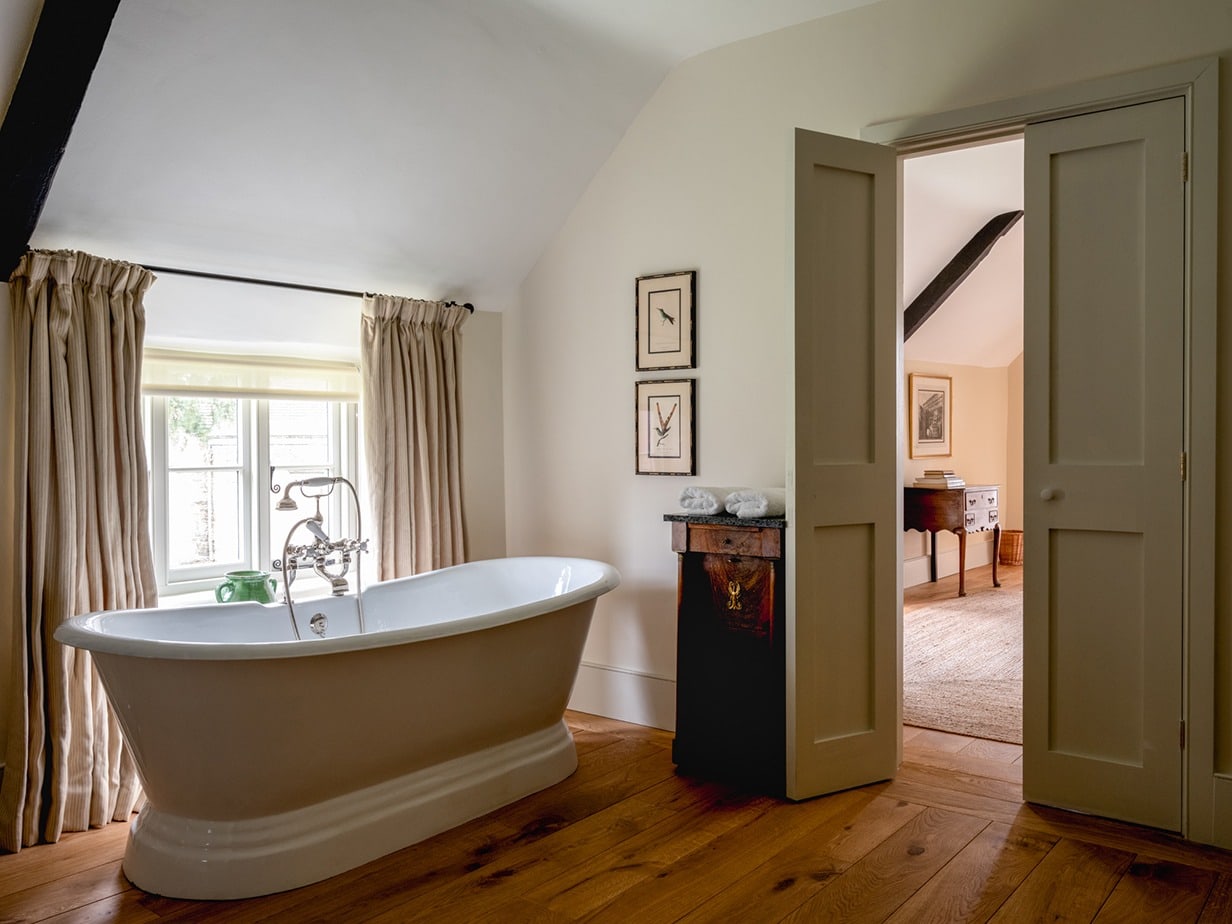
Our New Wood

Our New Wood
New oak is also durable, especially with modern treatments, but it lacks the historical narrative that reclaimed wood carries. However, it benefits from contemporary processing technologies that enhance its natural resilience, promising longevity.
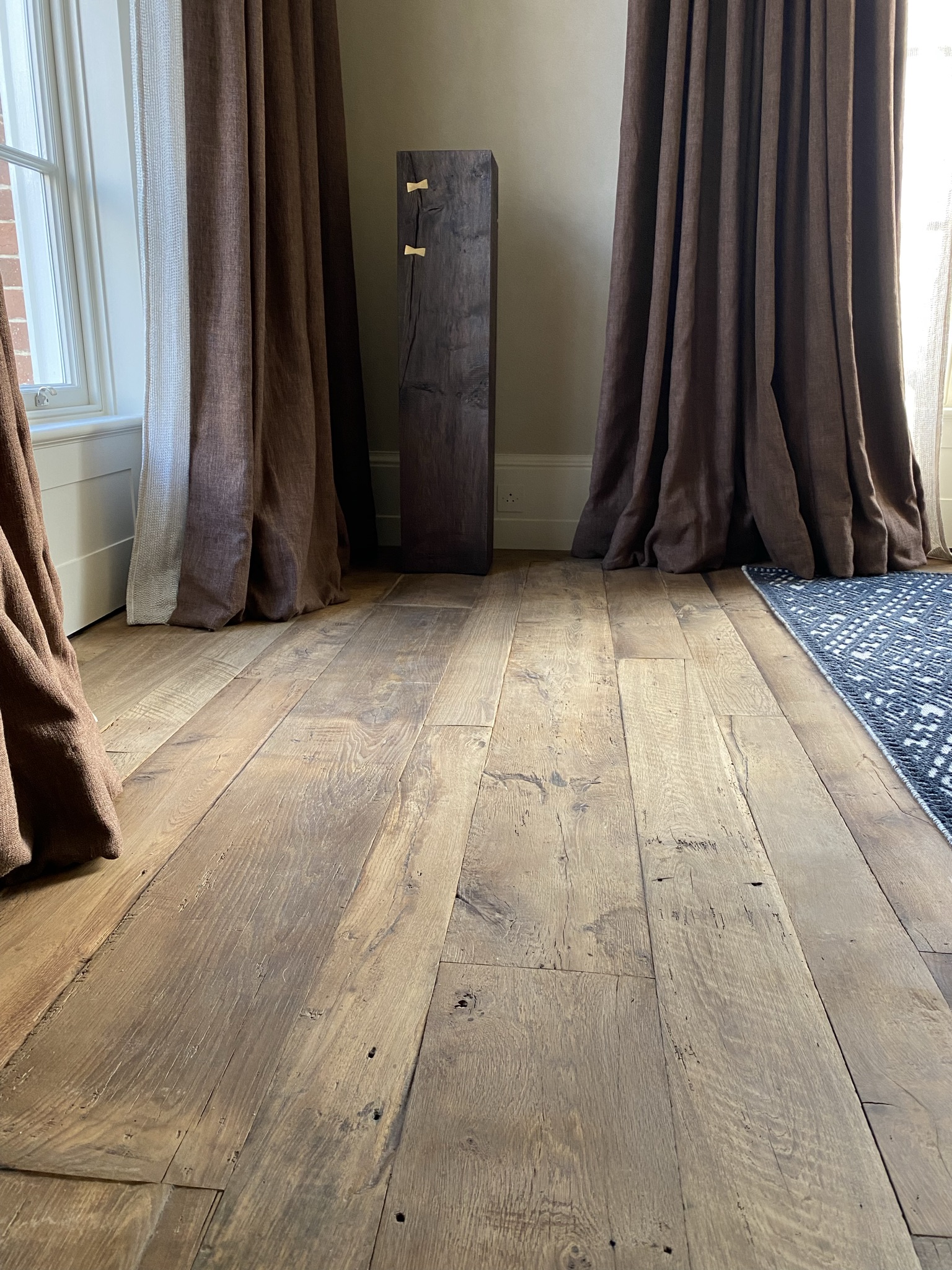
Our Reclaimed Wood
Cost is a significant factor in deciding between reclaimed and new oak flooring. Reclaimed oak demands meticulous preparation—salvaging, cleaning, and crafting each piece to preserve its unique historical character. This adds to its charm and cost, making it a premium choice, as noted by Remodelista.
Alternatively, new oak is generally more cost-effective. Managed forest resources and efficient production processes make new oak more accessible and uniform, appealing for budget-conscious renovations.
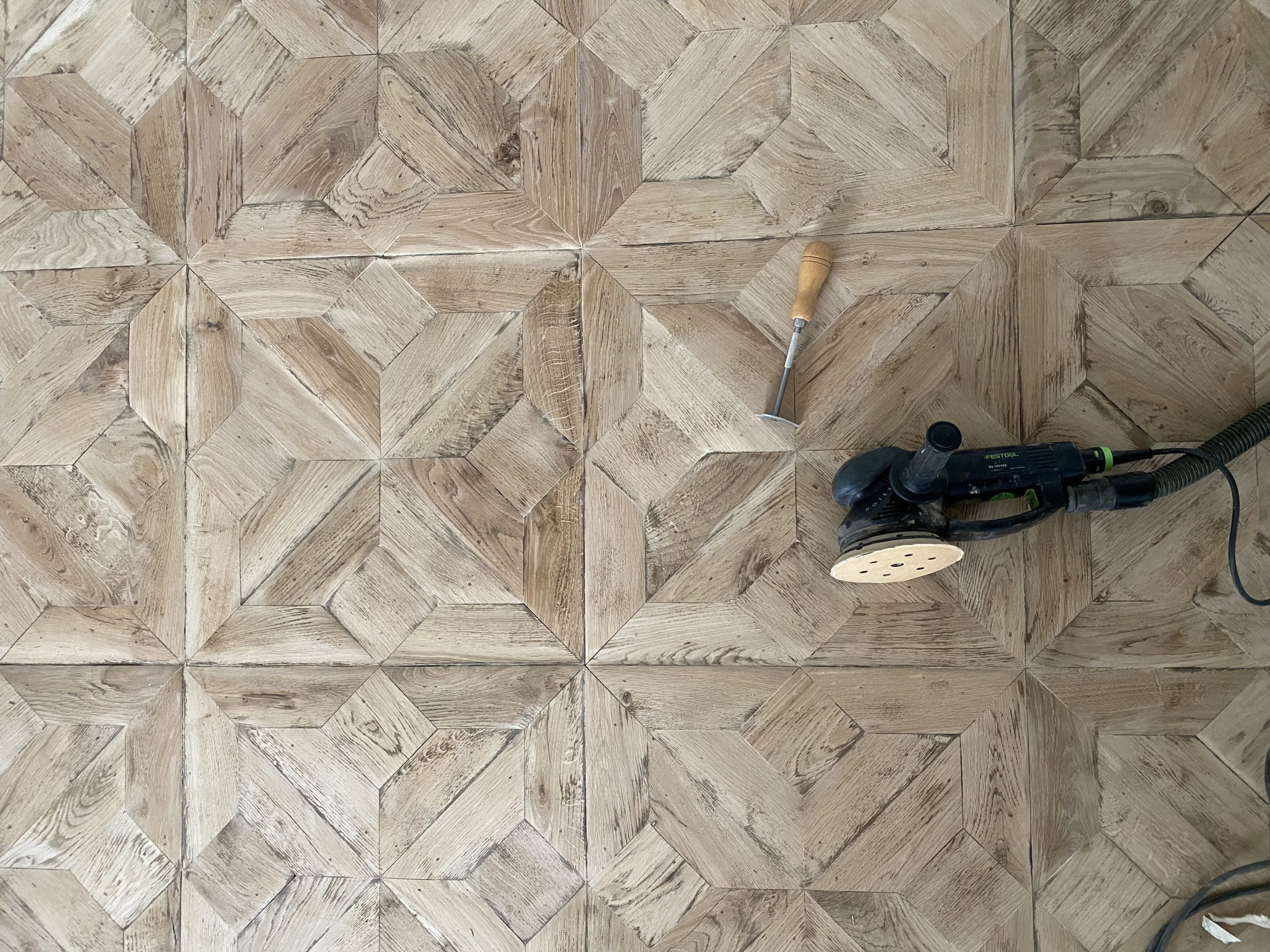
Our Reclaimed Wood
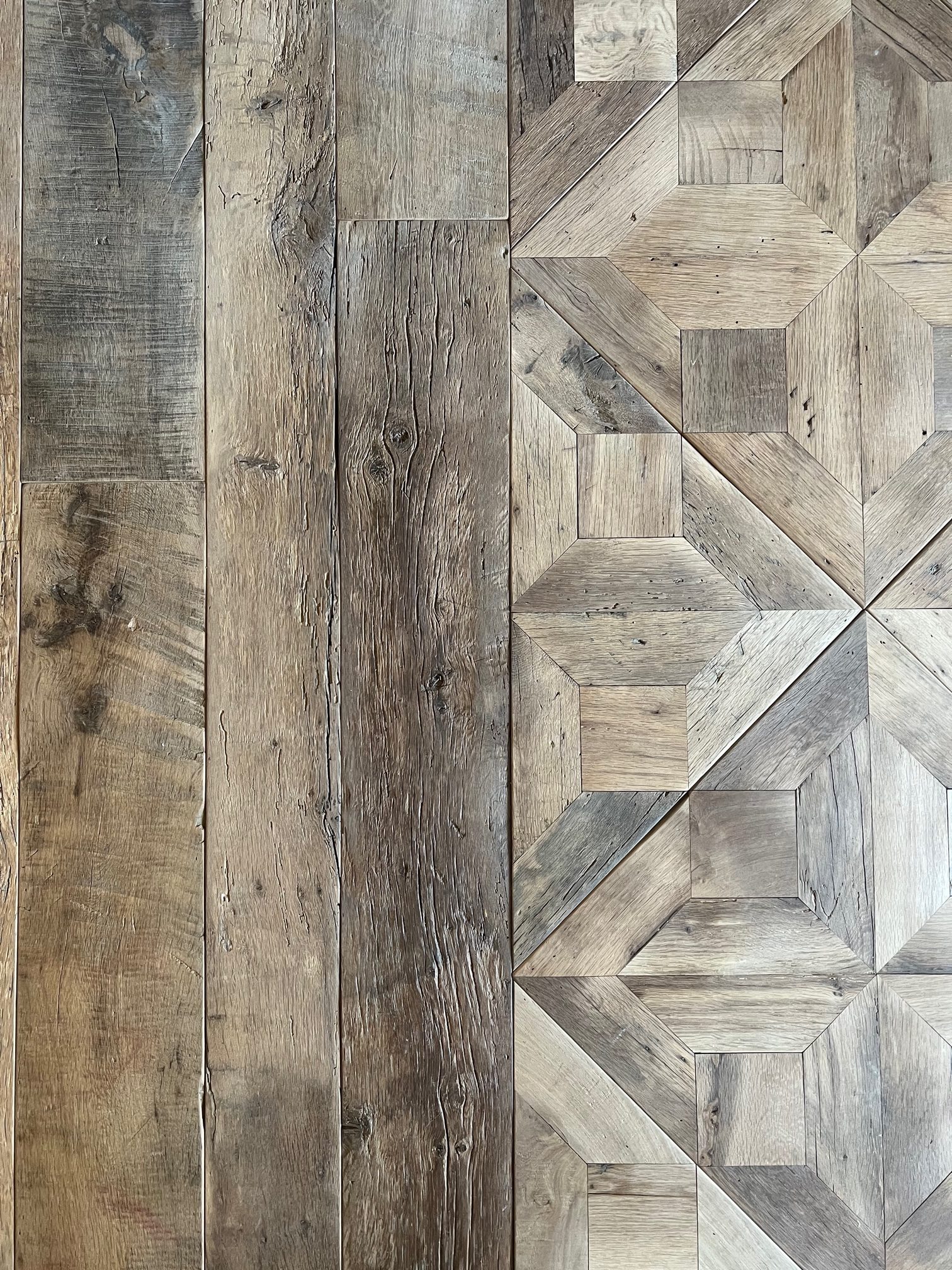
Our Reclaimed Wood

Our Reclaimed Wood
The installation of reclaimed oak flooring is an art form, requiring skilled craftsmanship to ensure each unique plank fits seamlessly into its new role. This labour-intensive process underscores the wood’s storied past and inherent beauty.
New oak, with its consistent size and texture, offers a straightforward installation process. The availability of prefinished options further streamlines the transformation of living spaces, eliminating the need for on-site finishing and providing a quick and convenient solution.
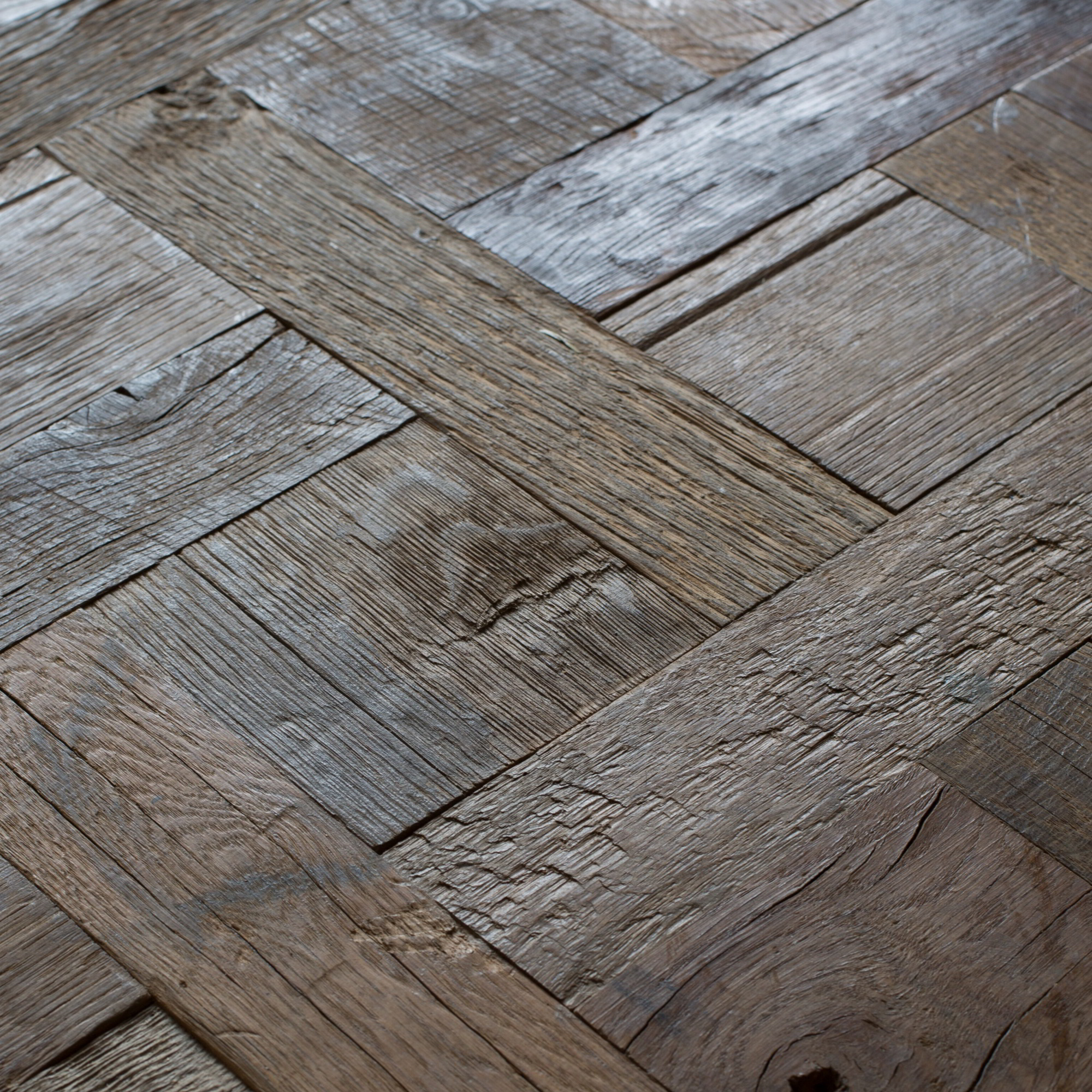
Our Reclaimed Wood
Choosing between reclaimed and new oak flooring is more than a practical decision—it reflects personal values and aesthetic vision. Whether you resonate with the rich narrative of reclaimed wood or new oak’s sleek, modern appeal, both paths offer a foundation of beauty and durability.
As you contemplate your choice, consider Arianna Huffington’s words: “We think, mistakenly, that success is the result of the amount of time we put in at work, instead of the quality of time we put in.” This philosophy can guide your decision, focusing on the quality and story that each option brings to your life and home, ensuring your choice meets your practical needs and aligns with your deeper values.
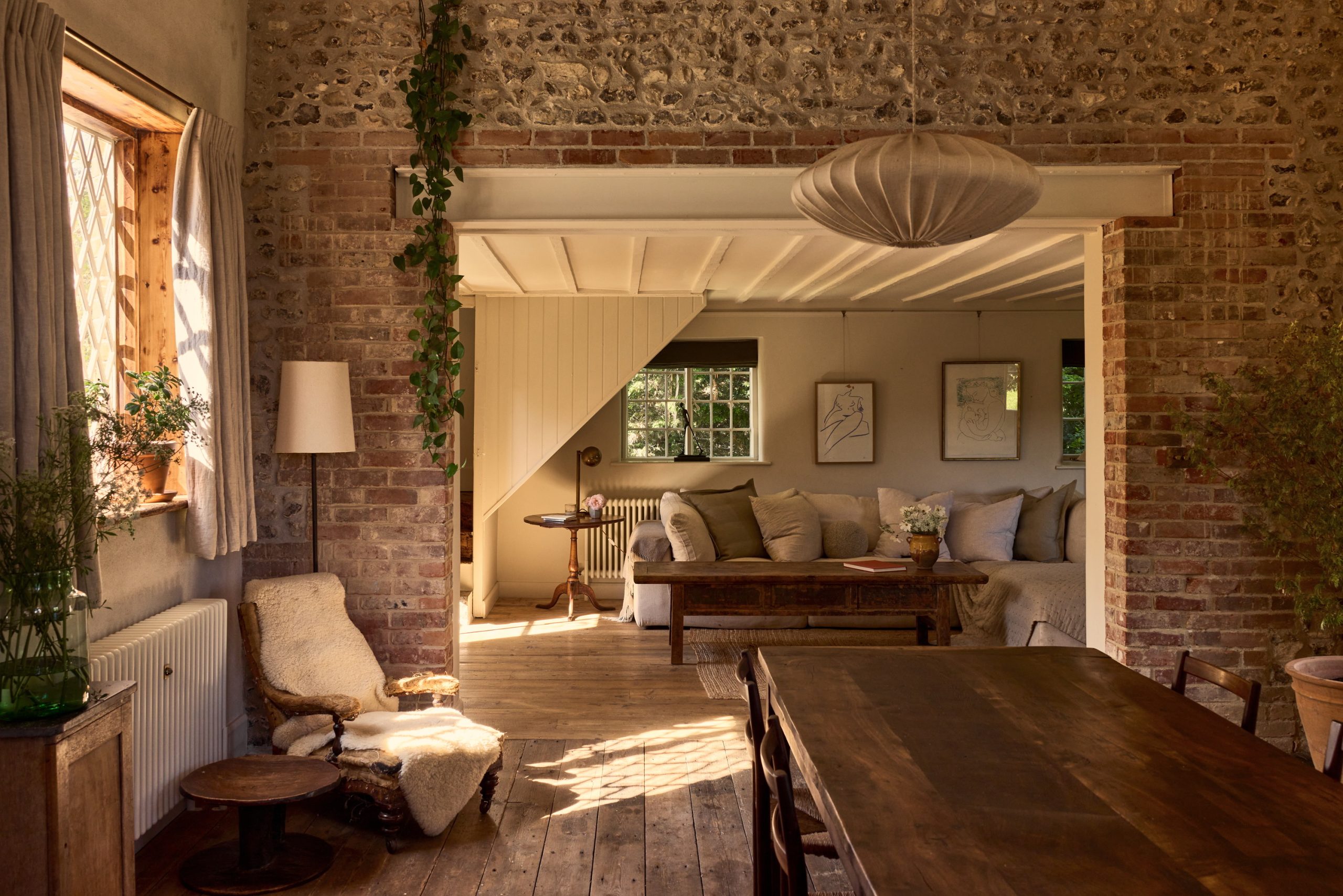
Our Reclaimed Wood